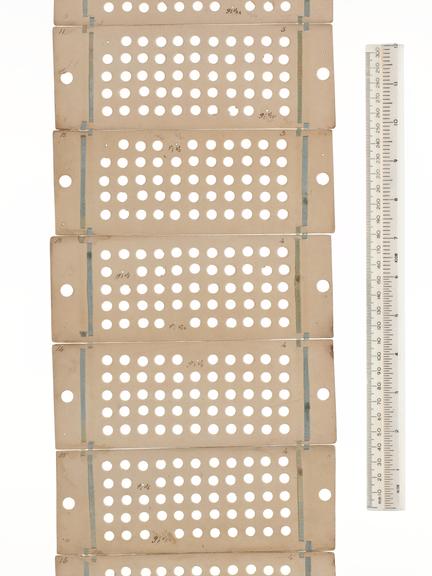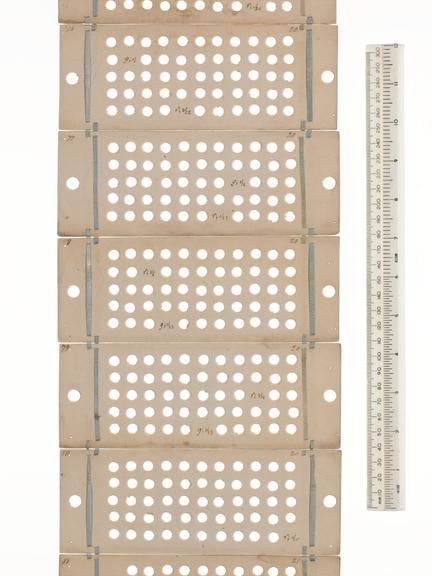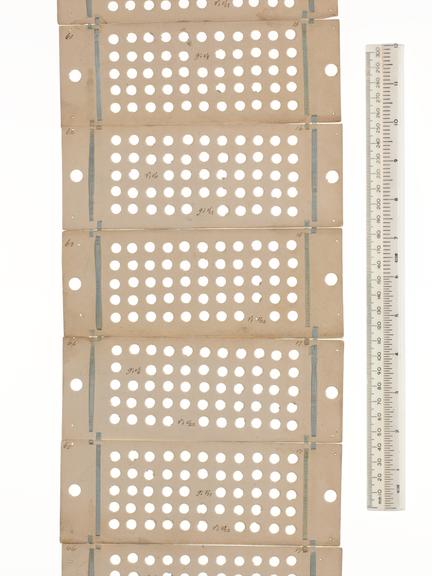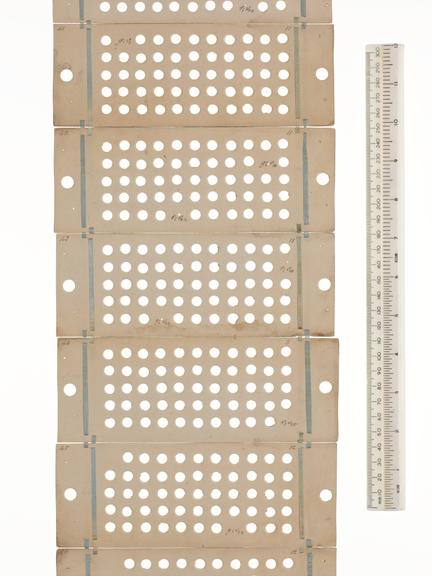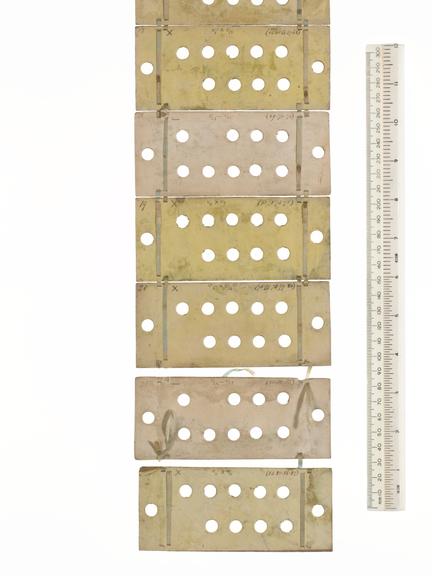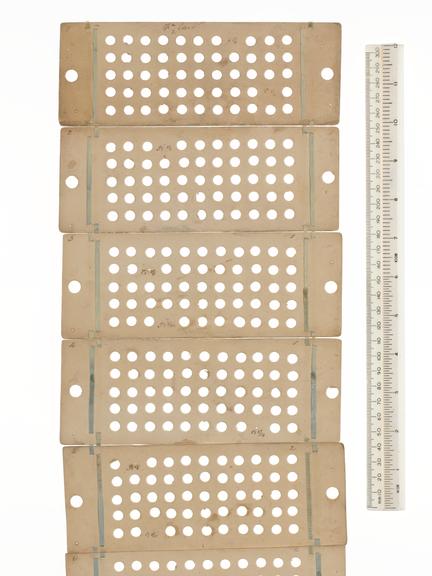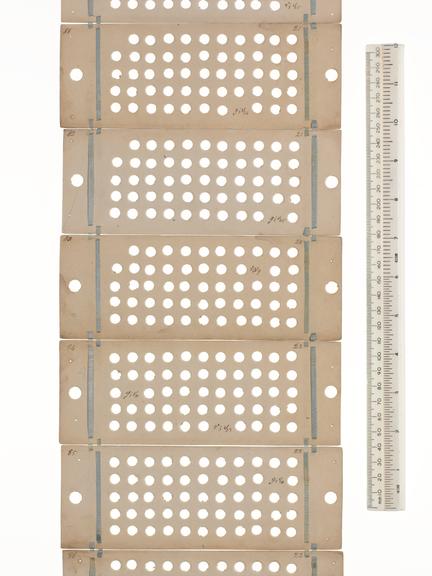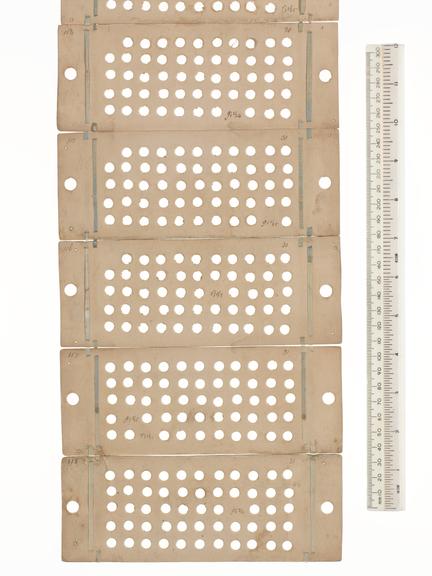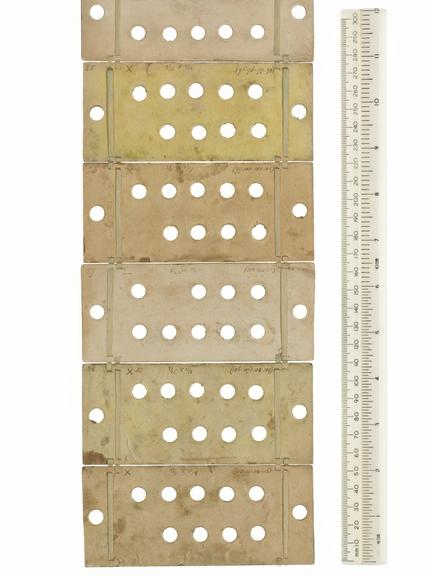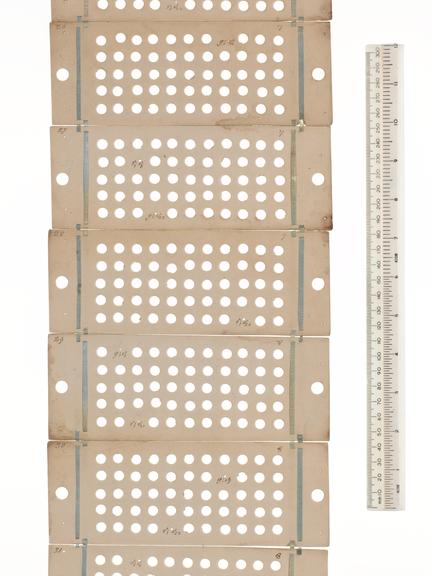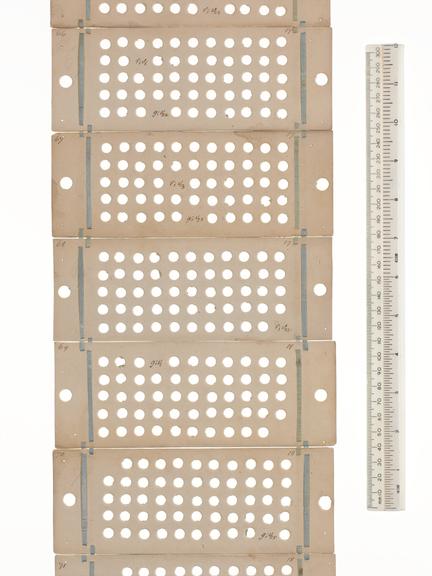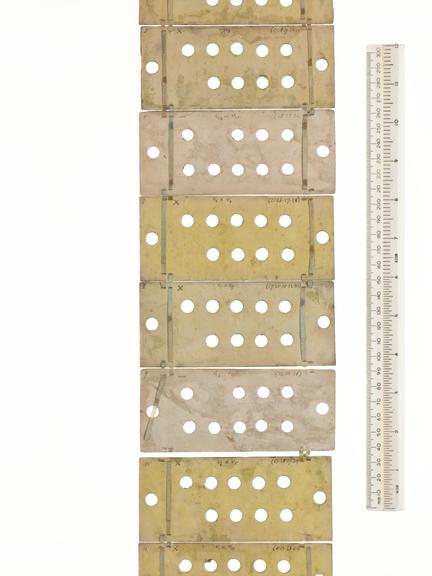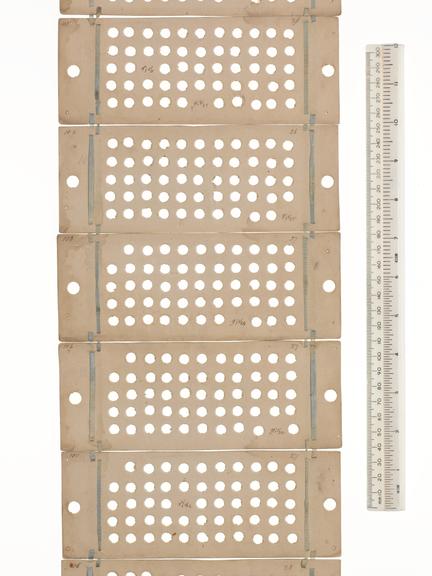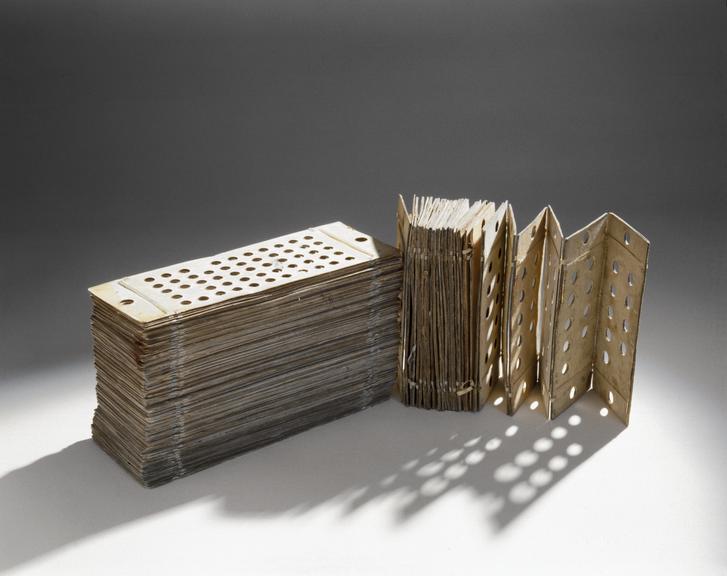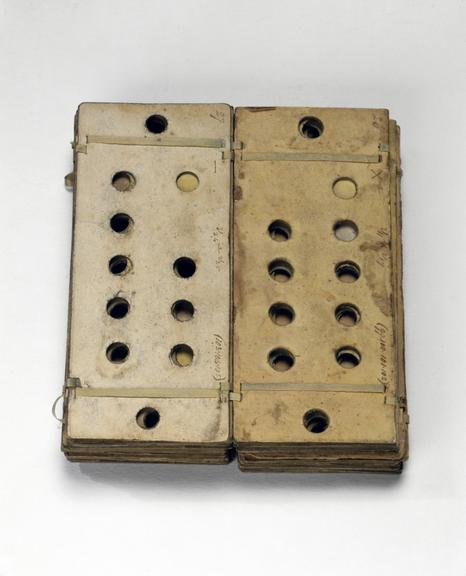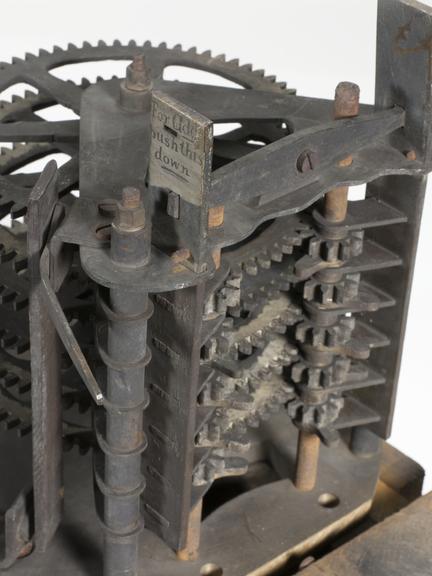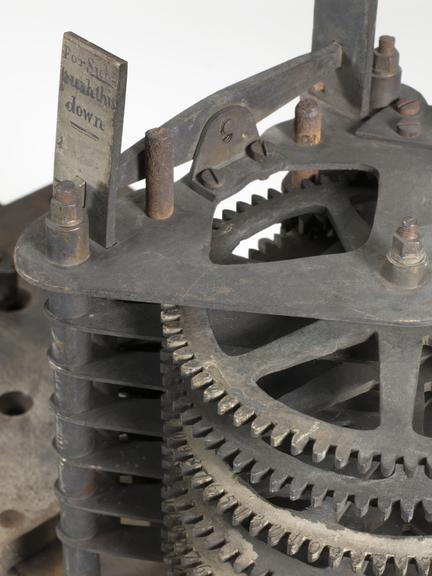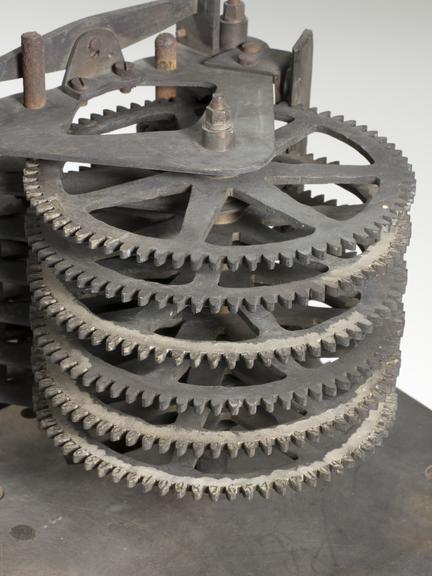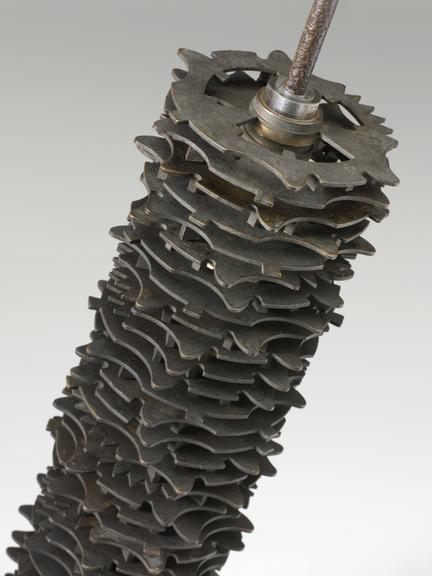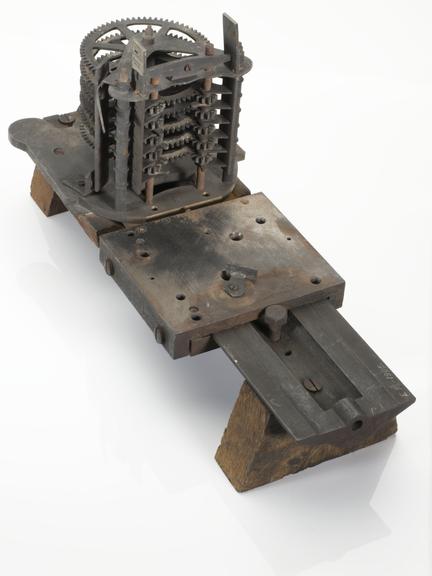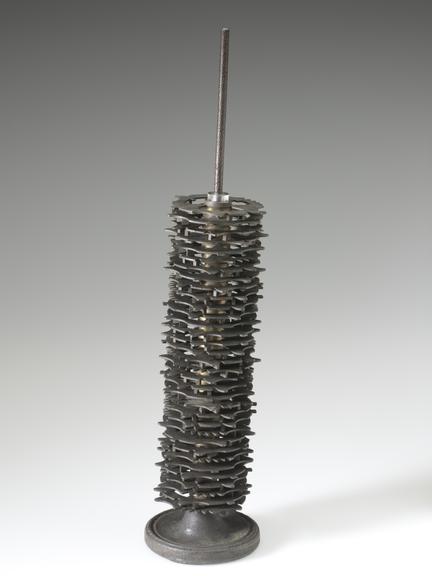
Slotted metal assembly on wooden base
Slotted metal assembly, mounted on a wooden base


























Experimental models and moulds from Charles Babbage's work on calculating machines. Charles Babbage (1791-1871) was a British computing pioneer who first conceived the idea of an advanced calculating machine to calculate and print mathematical tables in 1812 and in 1834 conceived a machine designed to evaluate any mathematical formula and to have even higher powers of analysis than his original Difference Engine of the 1820s. Only part of the machine was completed before Babbage's death in 1871.

Slotted metal assembly, mounted on a wooden base
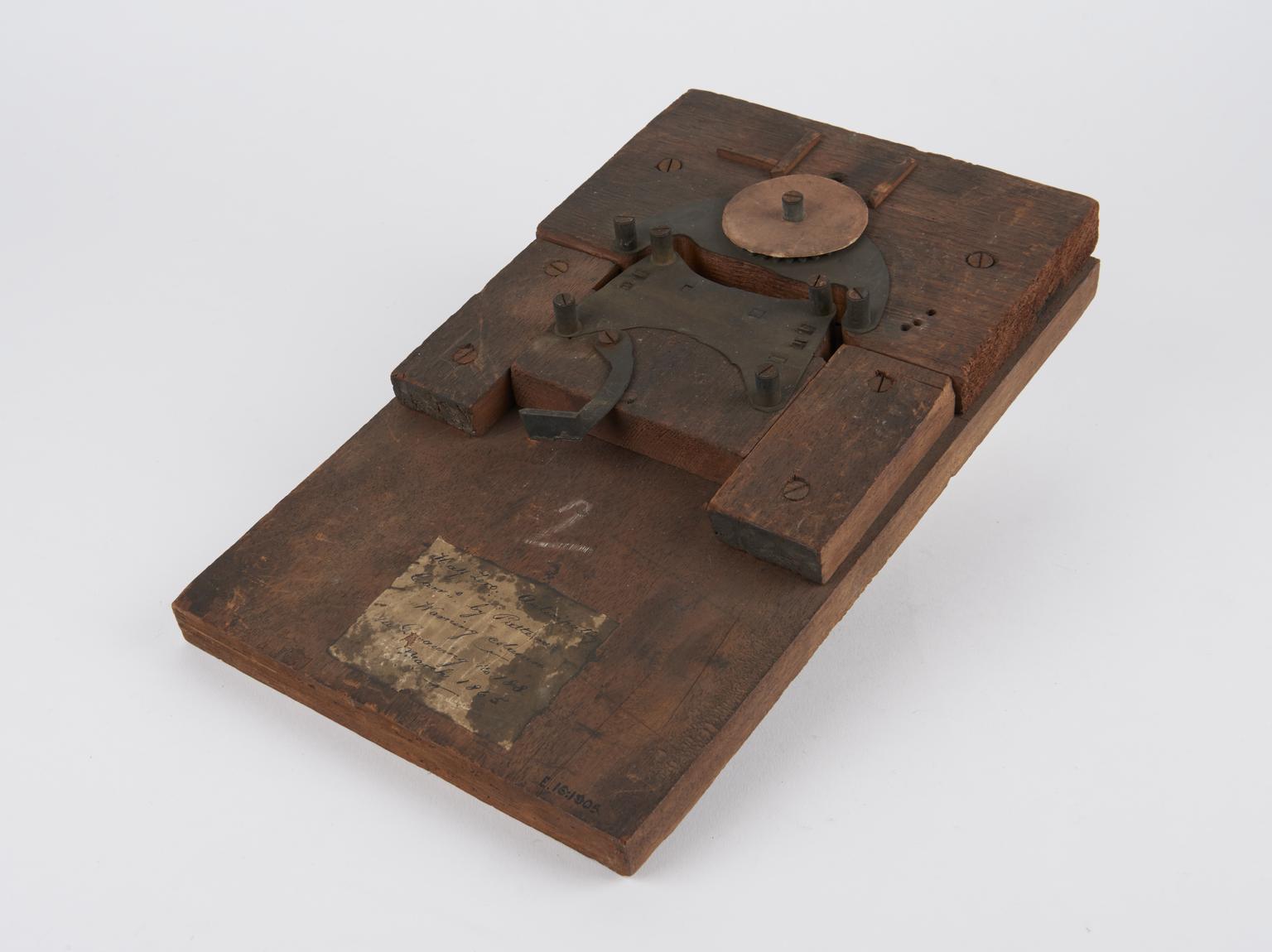
Half Zero Anticipating Carriage Assembly, mounted on a wooden base
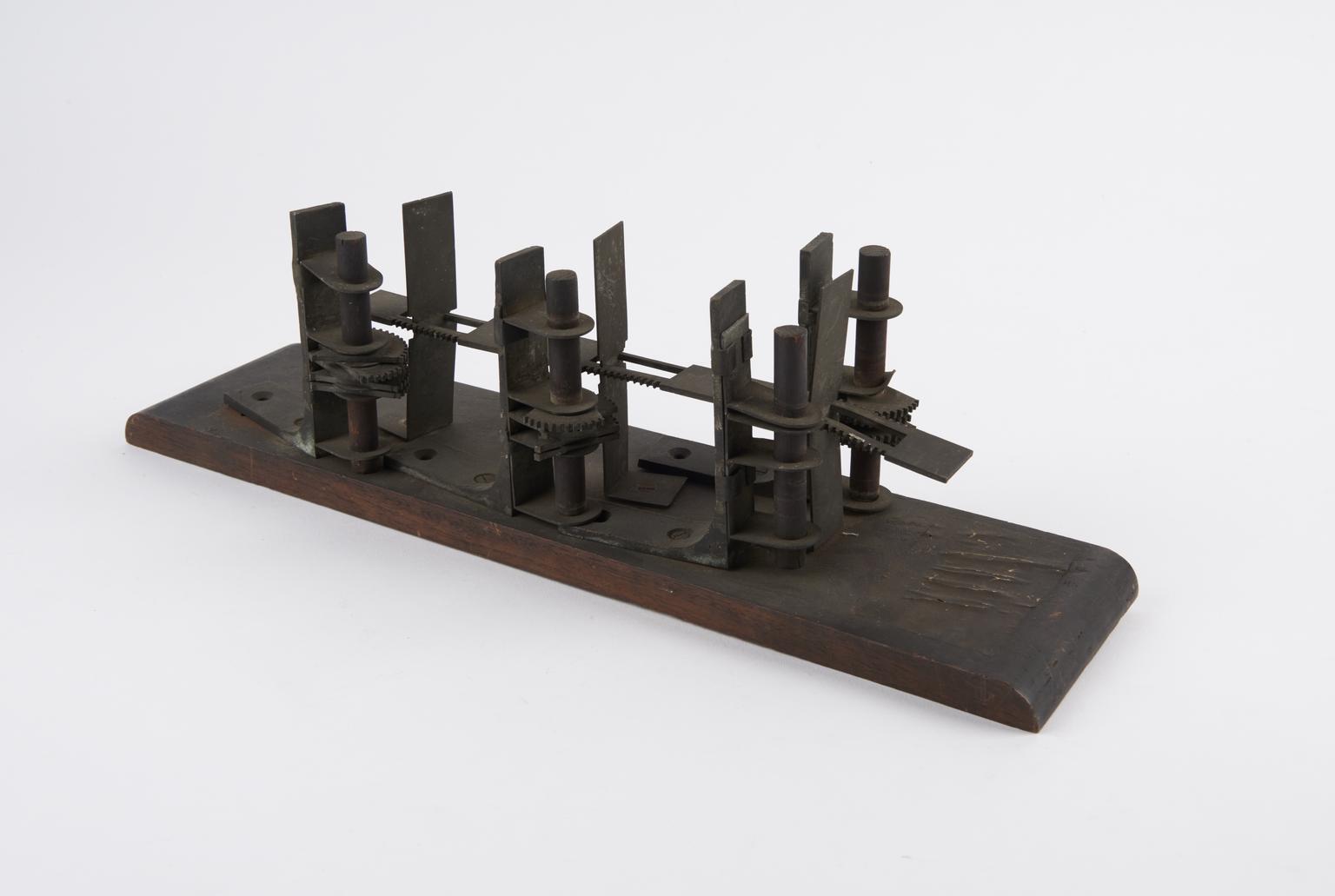
Rack and gear wheel assembly, mounted on a wooden base
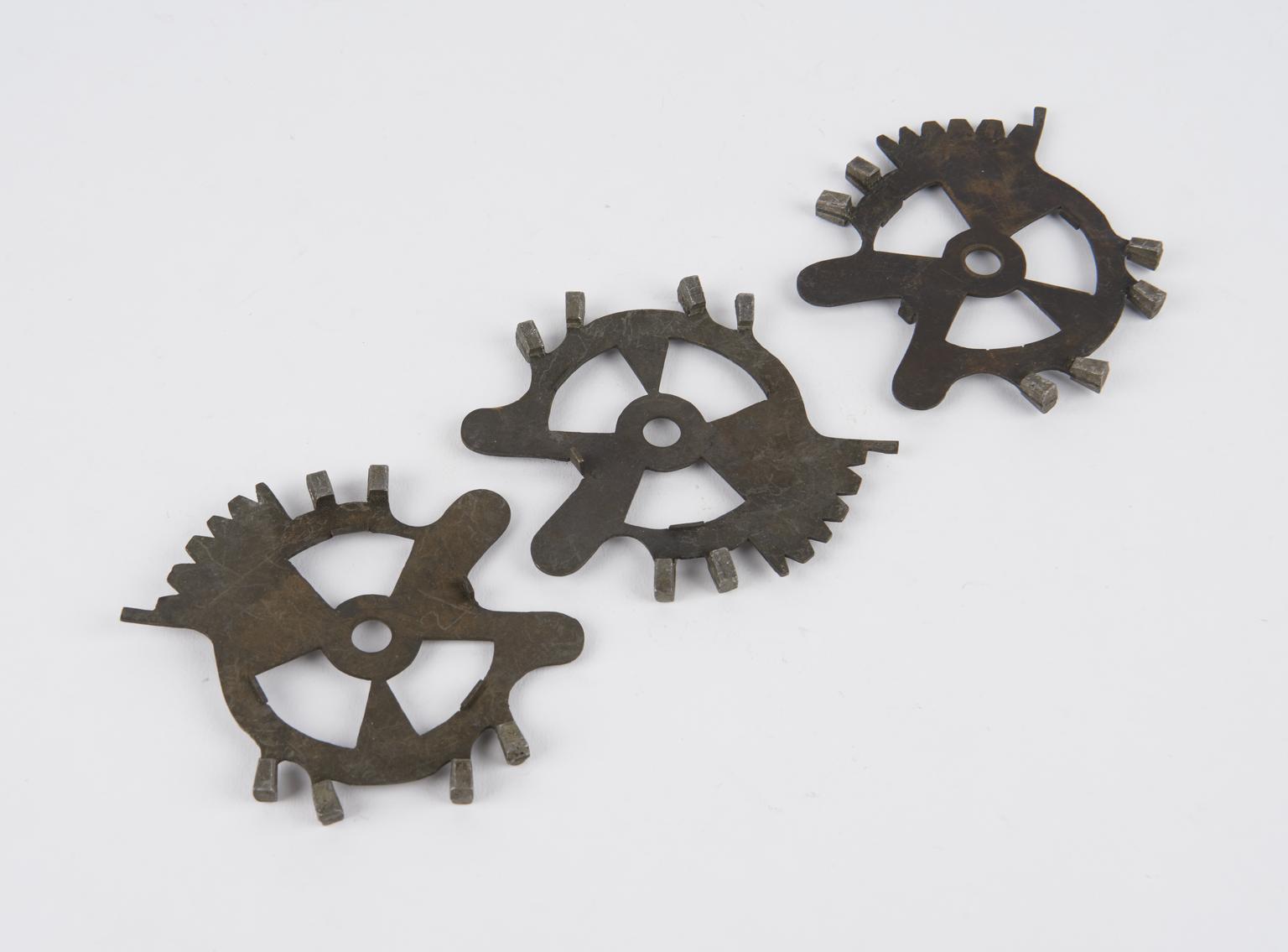
3 x Preliminary wheels for carriage
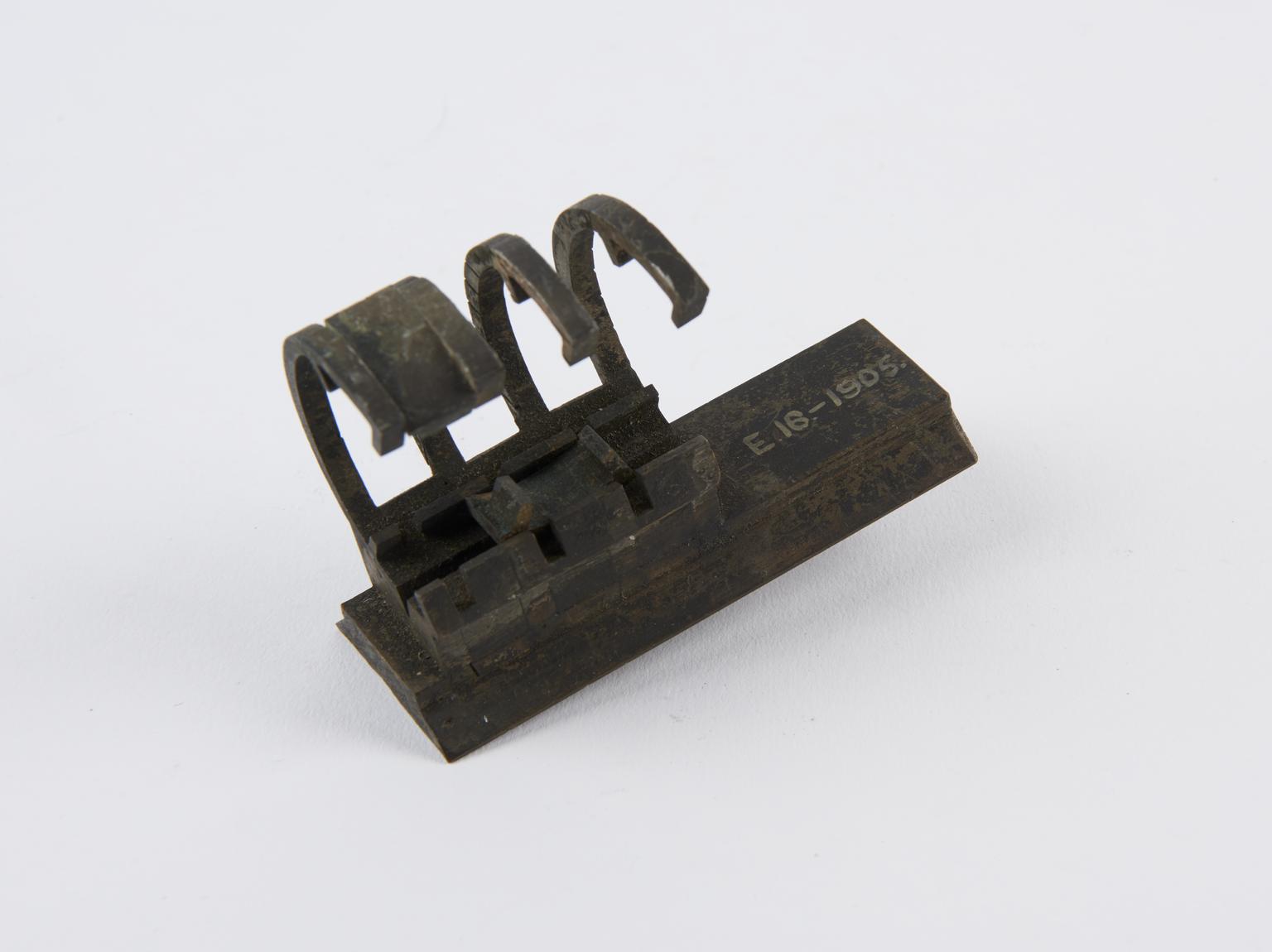
Machined bar with slide and four arched bars
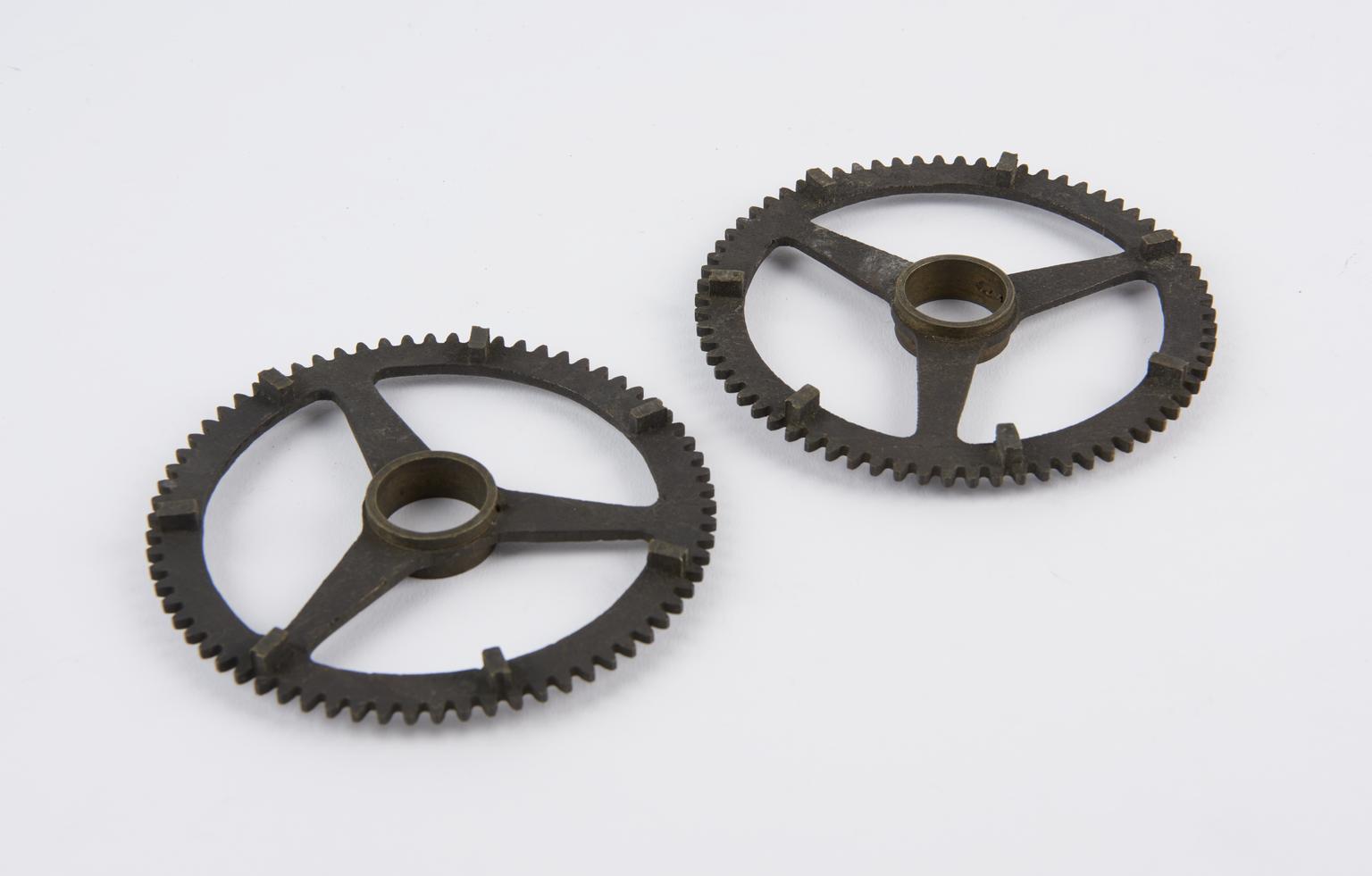
2 x Toothed wheels
17 x Pieces of metal used for moulding parts
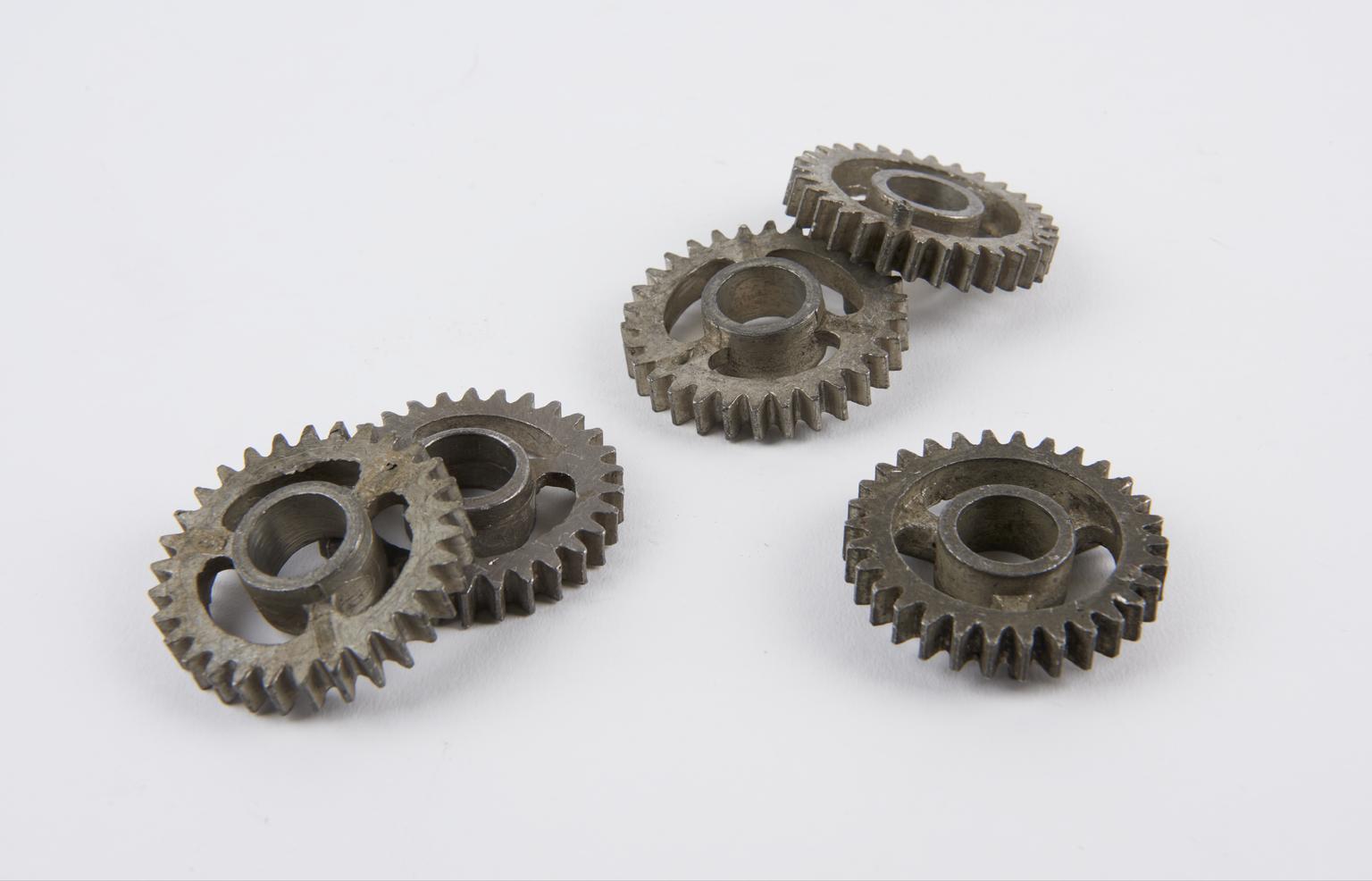
4 x cast gear wheels
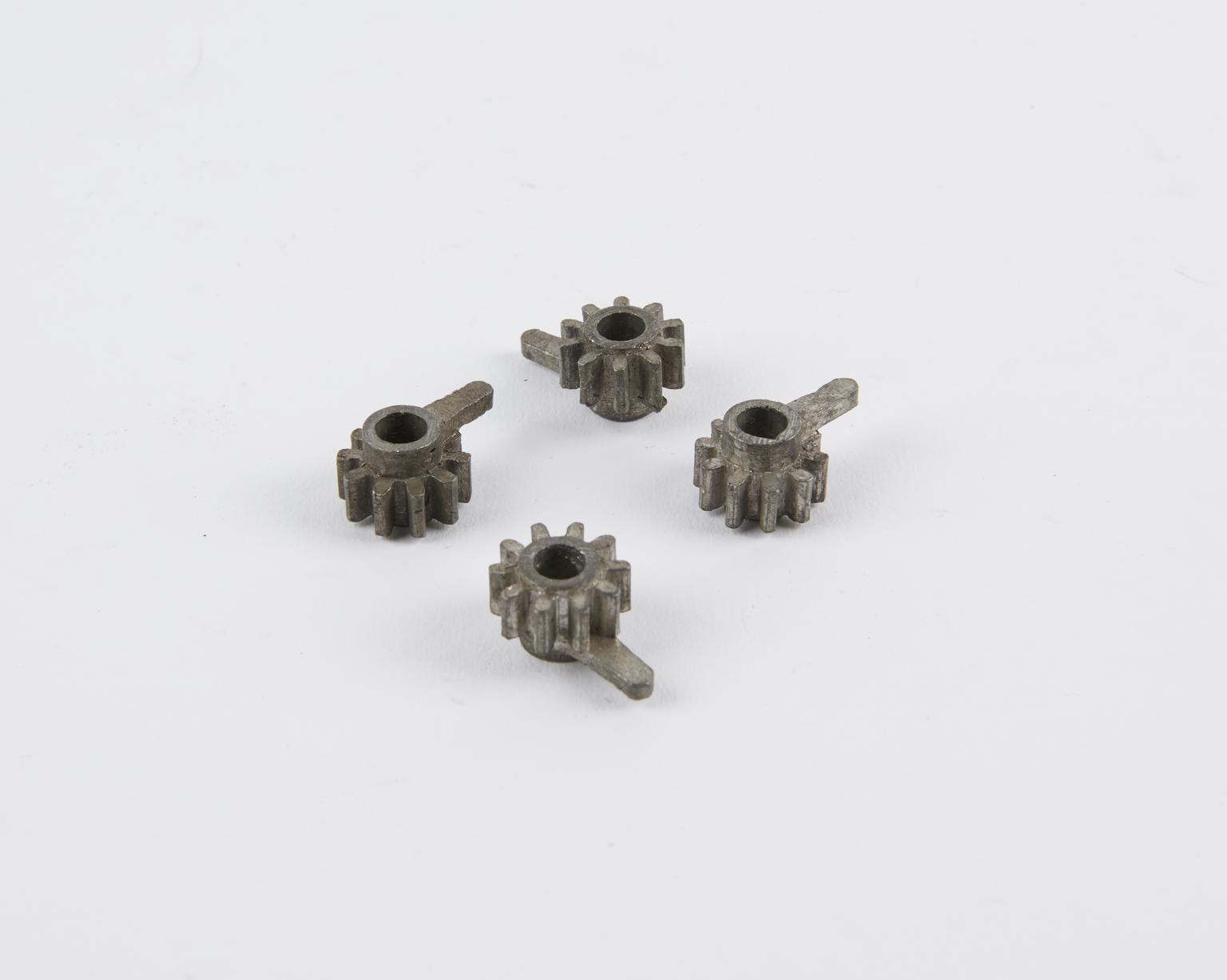
4 x 10 tooth pinion wheels
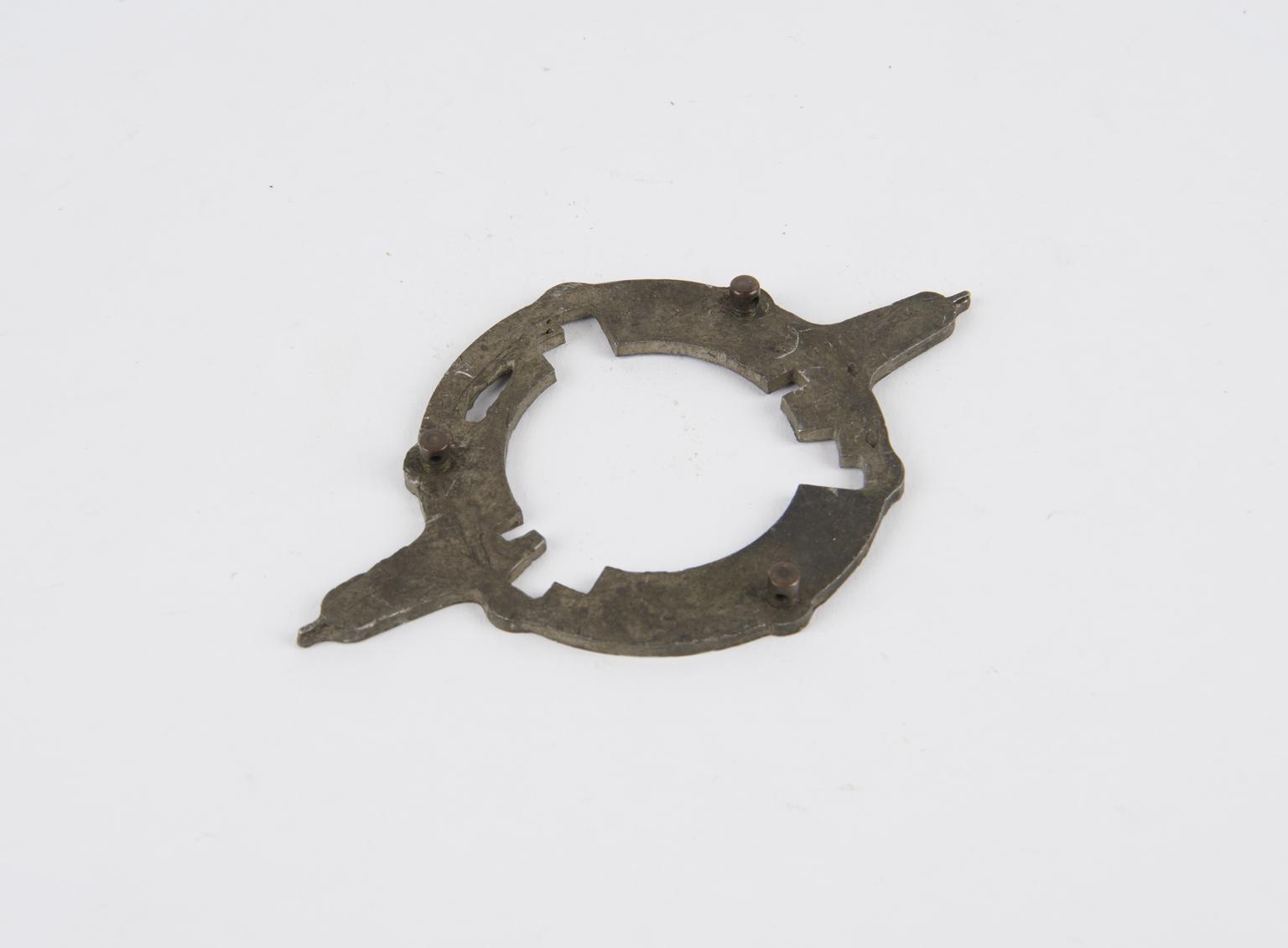
An assembly, with studs fitted
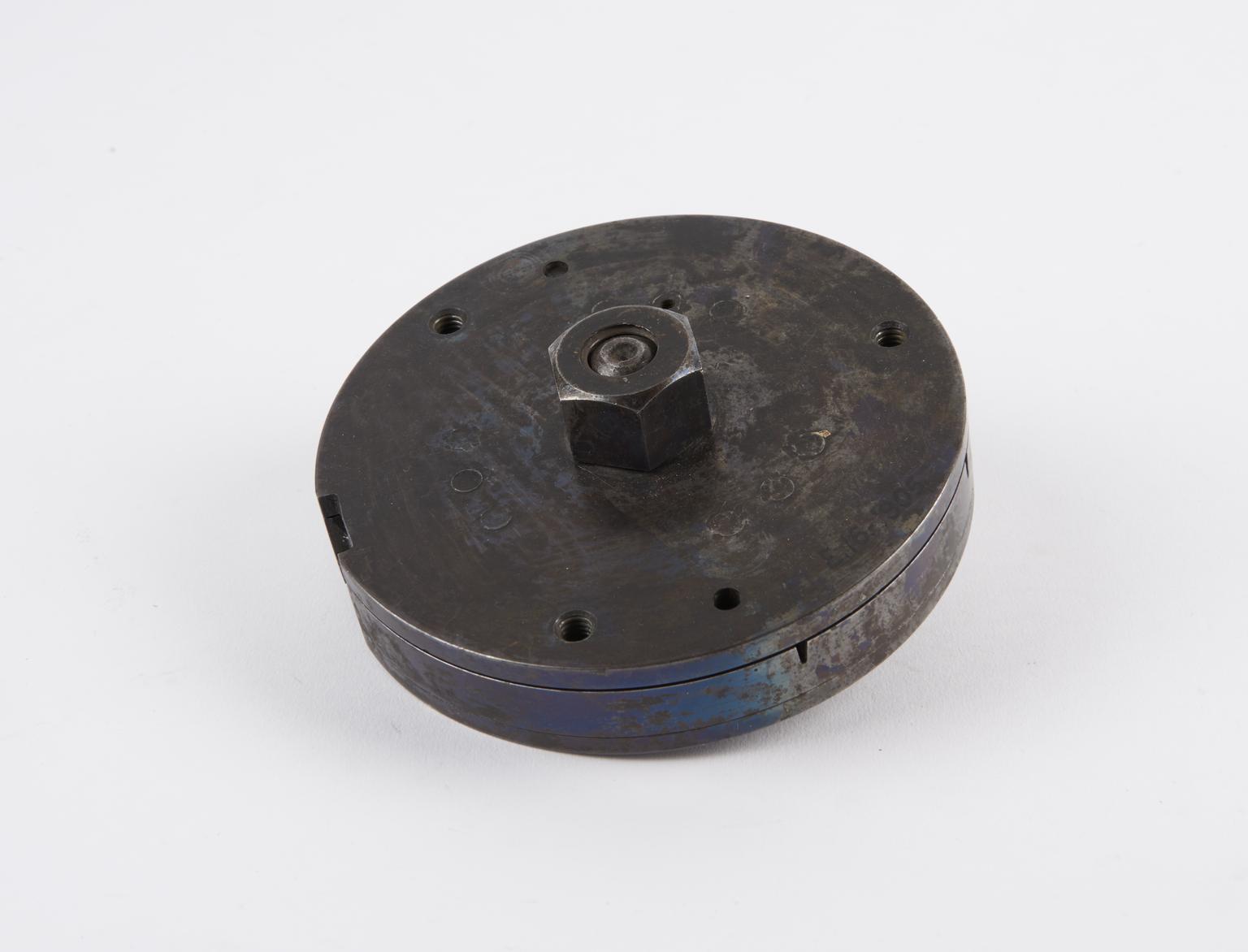
Steel mould for lower carriage plate
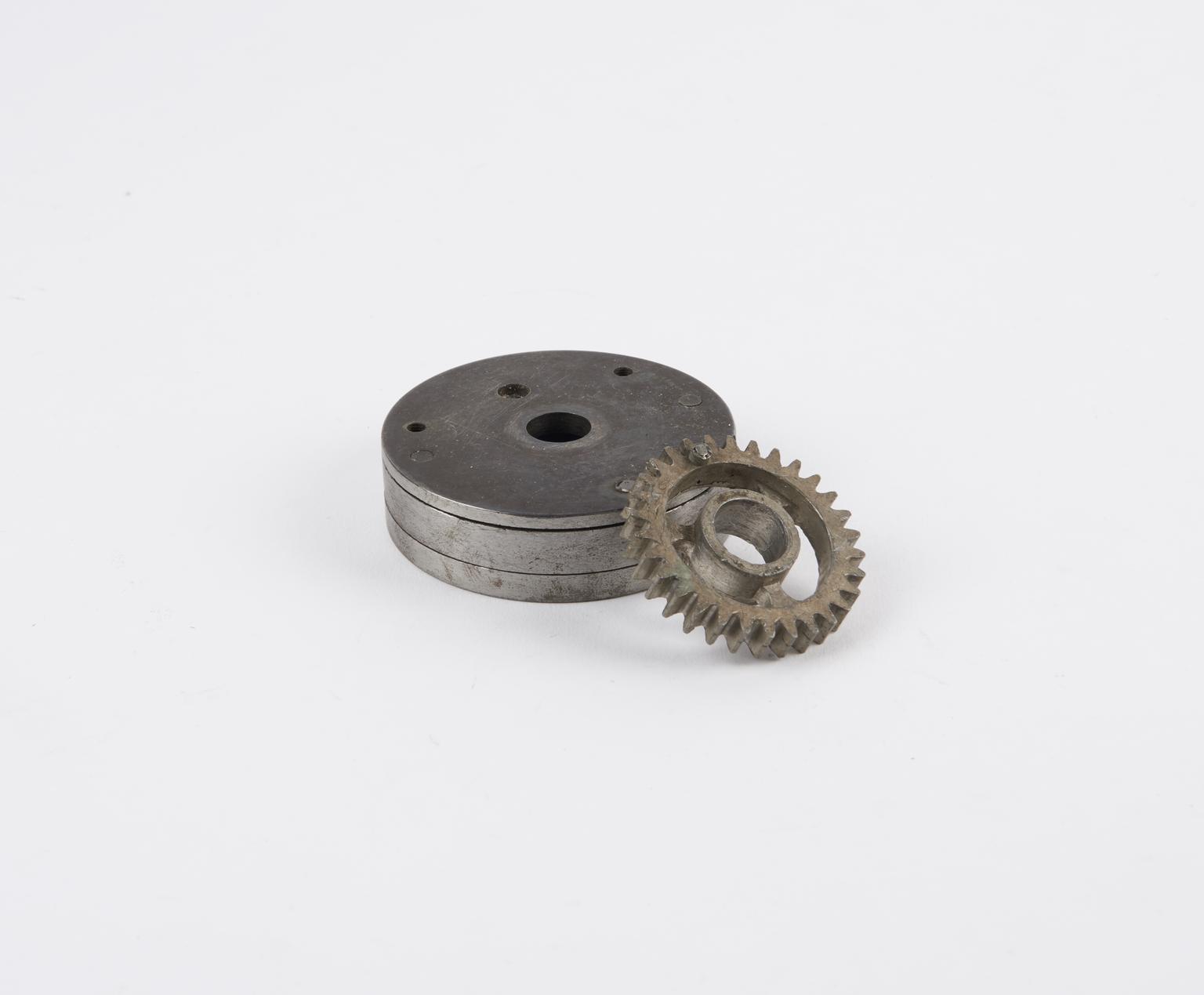
Steel mould and gear wheel

Die, for pressure casting

Channel bar with rack inserts

Cast gear wheel and toothed disk
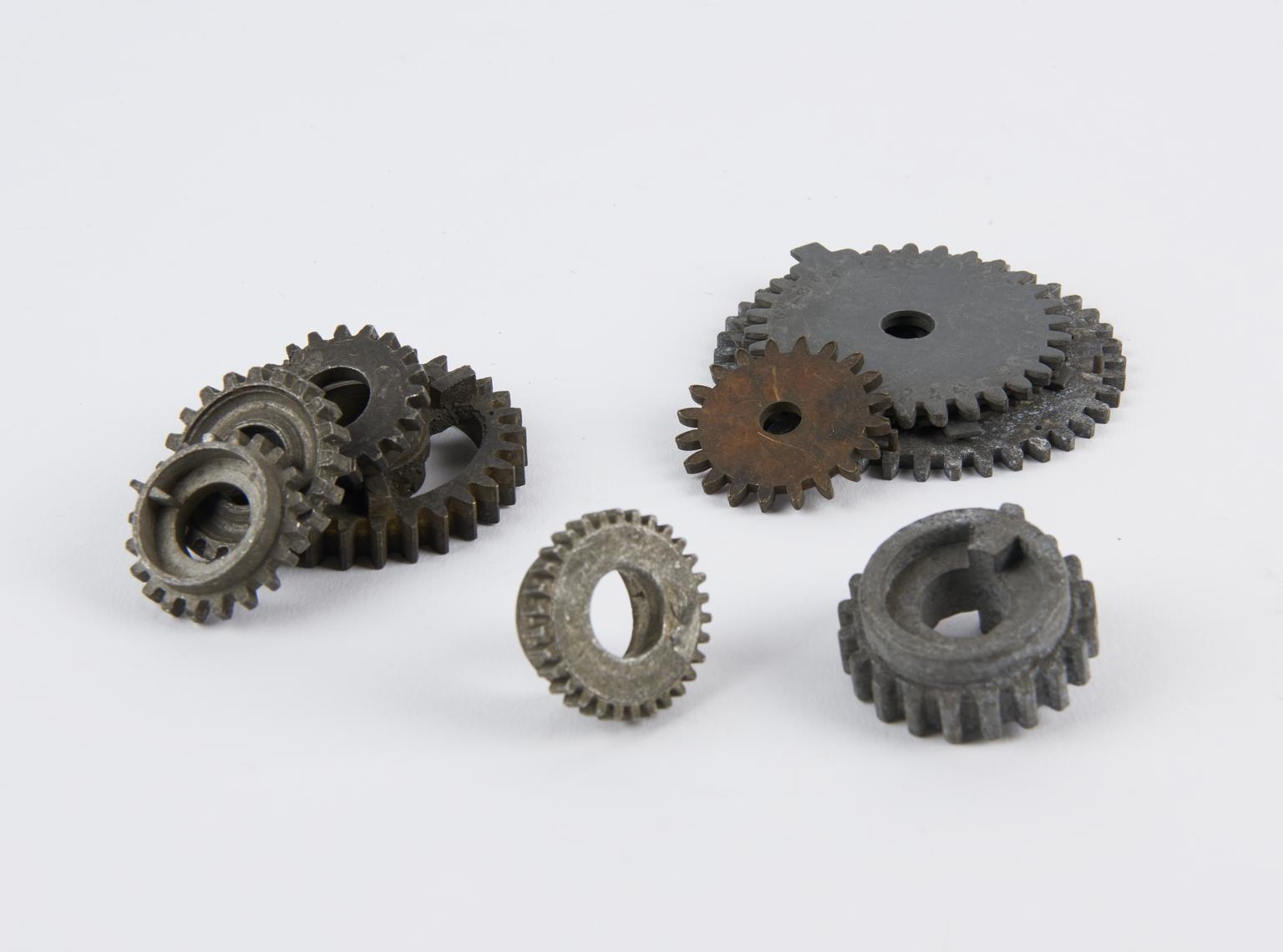
12 x gear wheels

Segmented Disk Assemblies
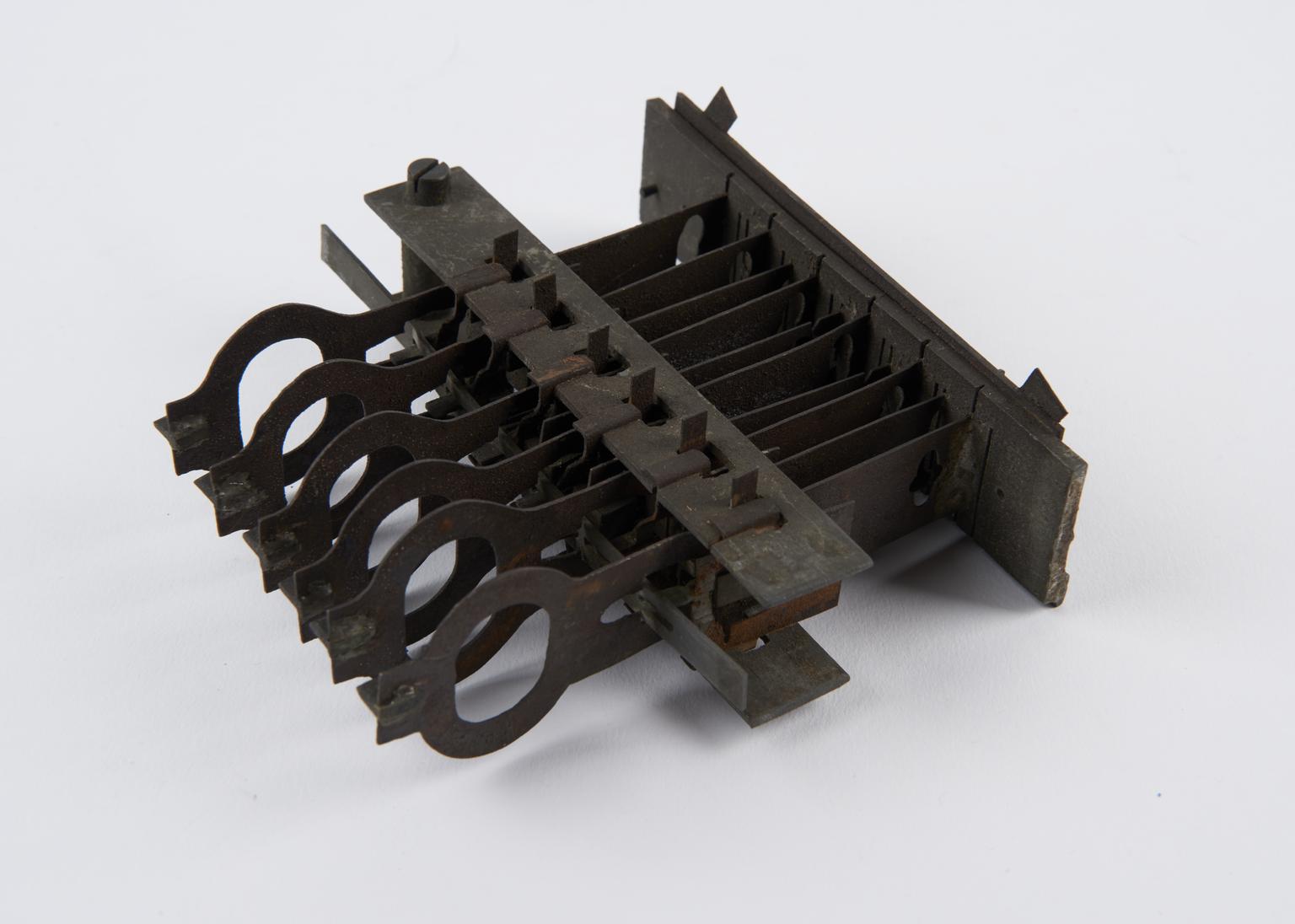
Unidentified brass assembly
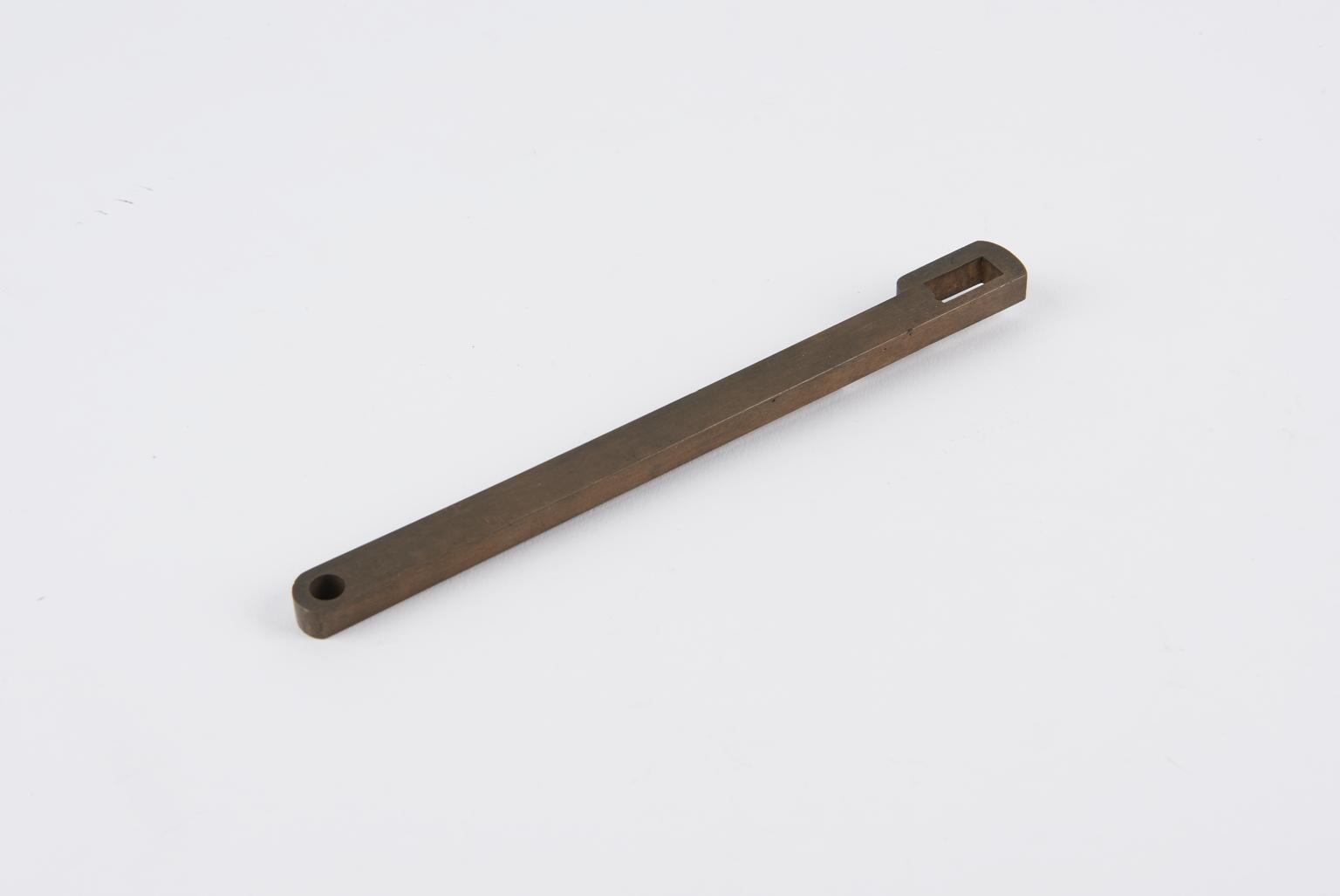
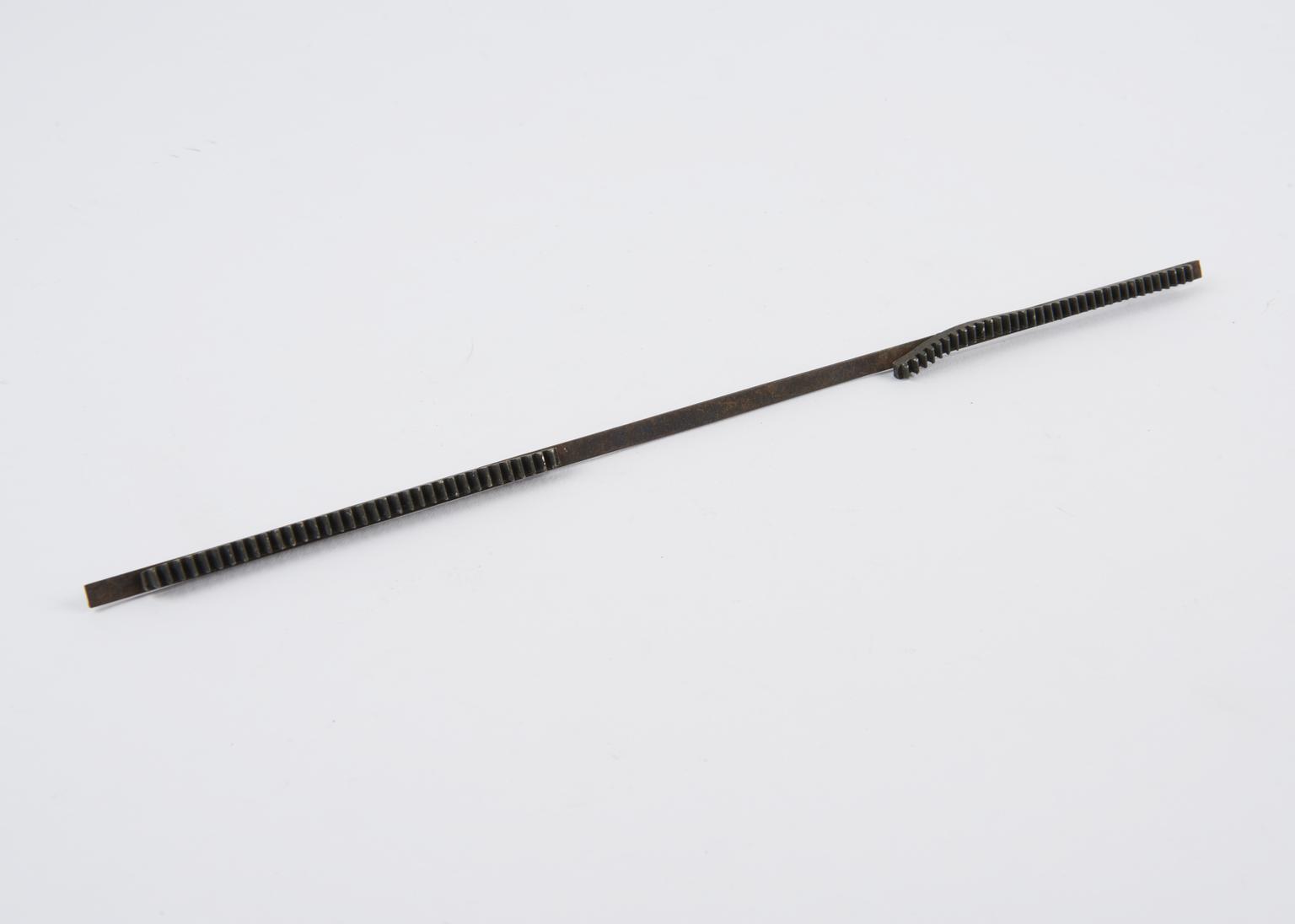
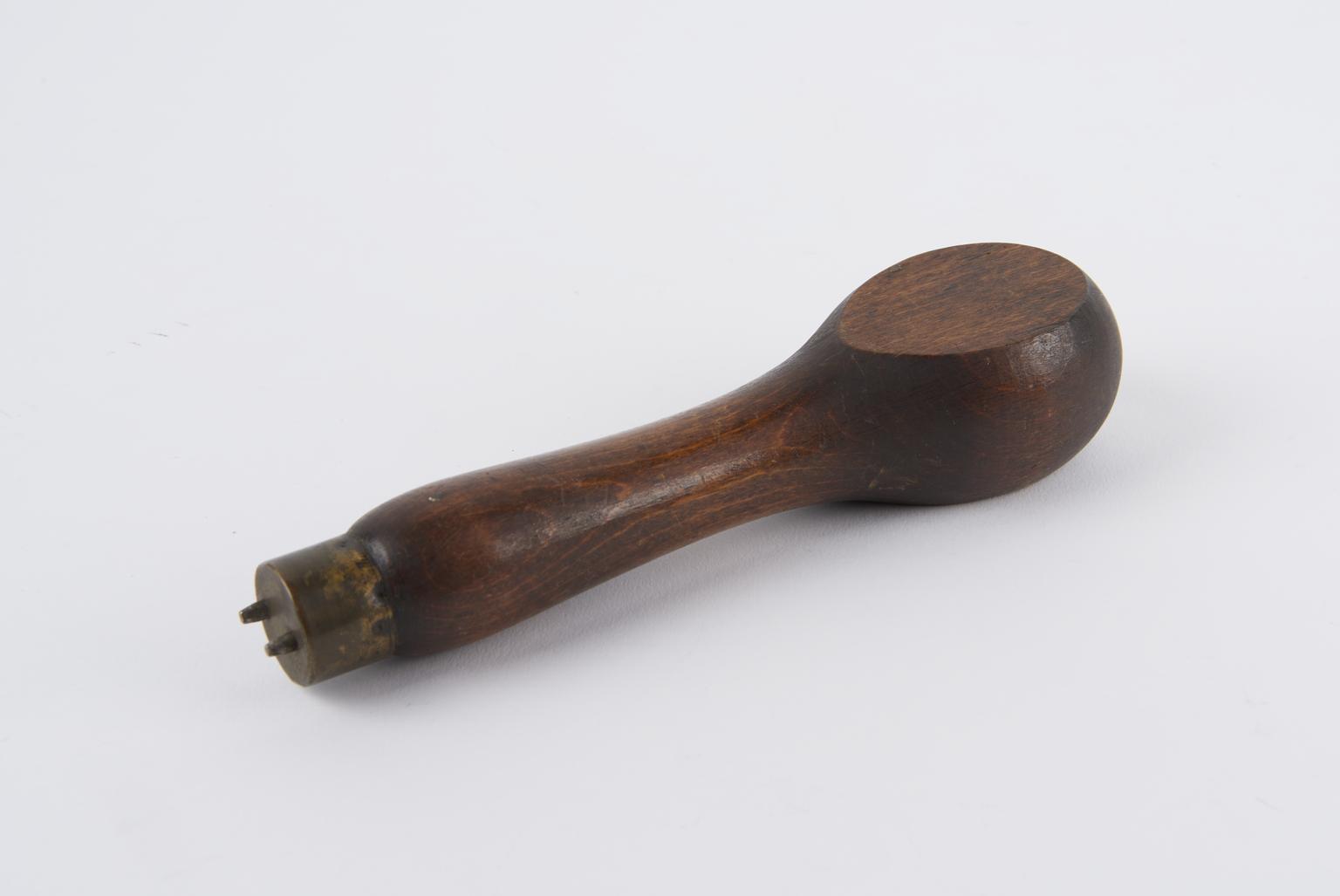
Wooden handle, for peg hole nuts

4 x Toothed bars (brass)

52 x Gear wheels (loose), 21 x washers (loose), all stored on a shaft
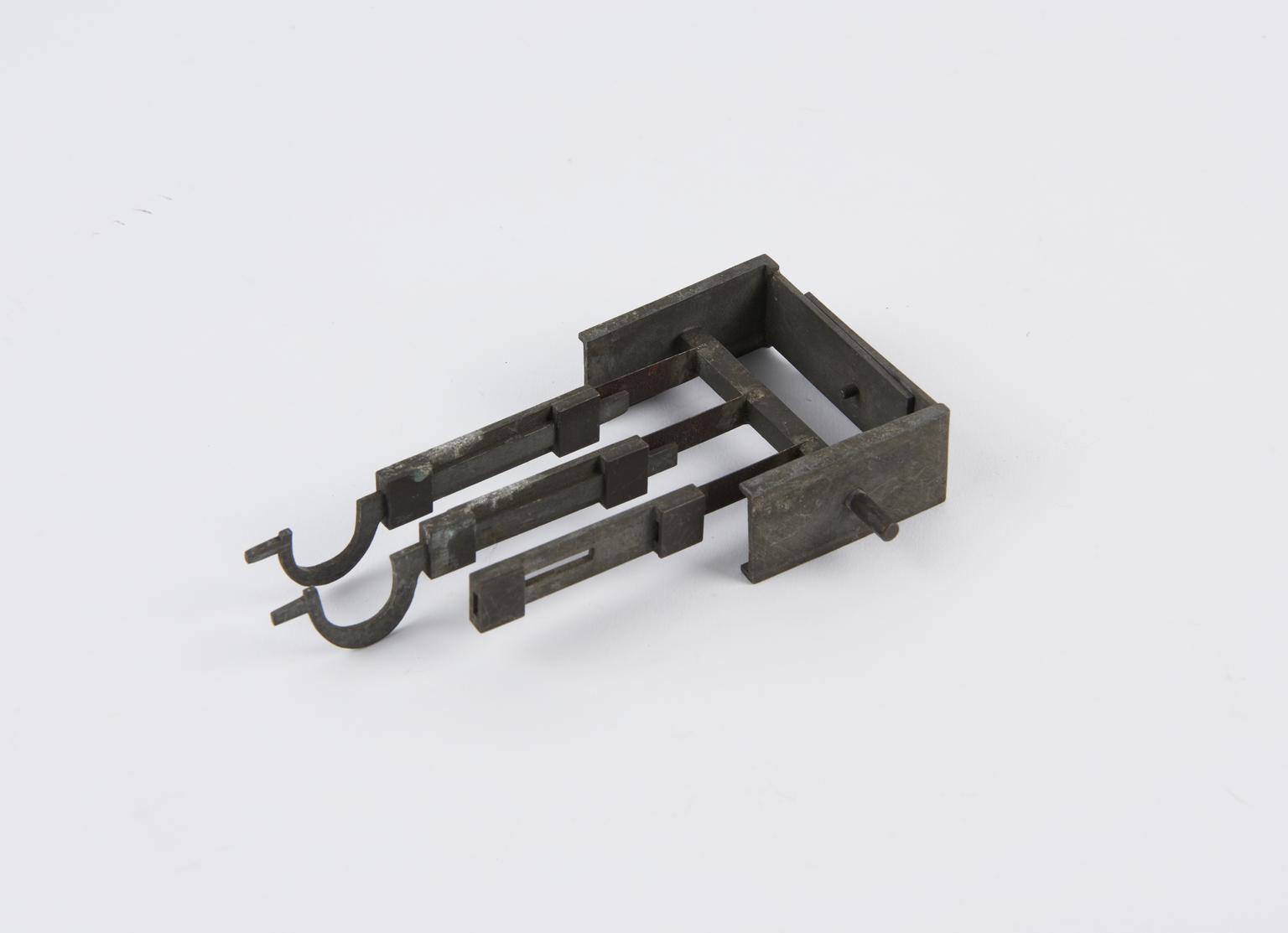
Unidentified Assembly
Lower plates from Analytical Engine qty 34. stored on a spike
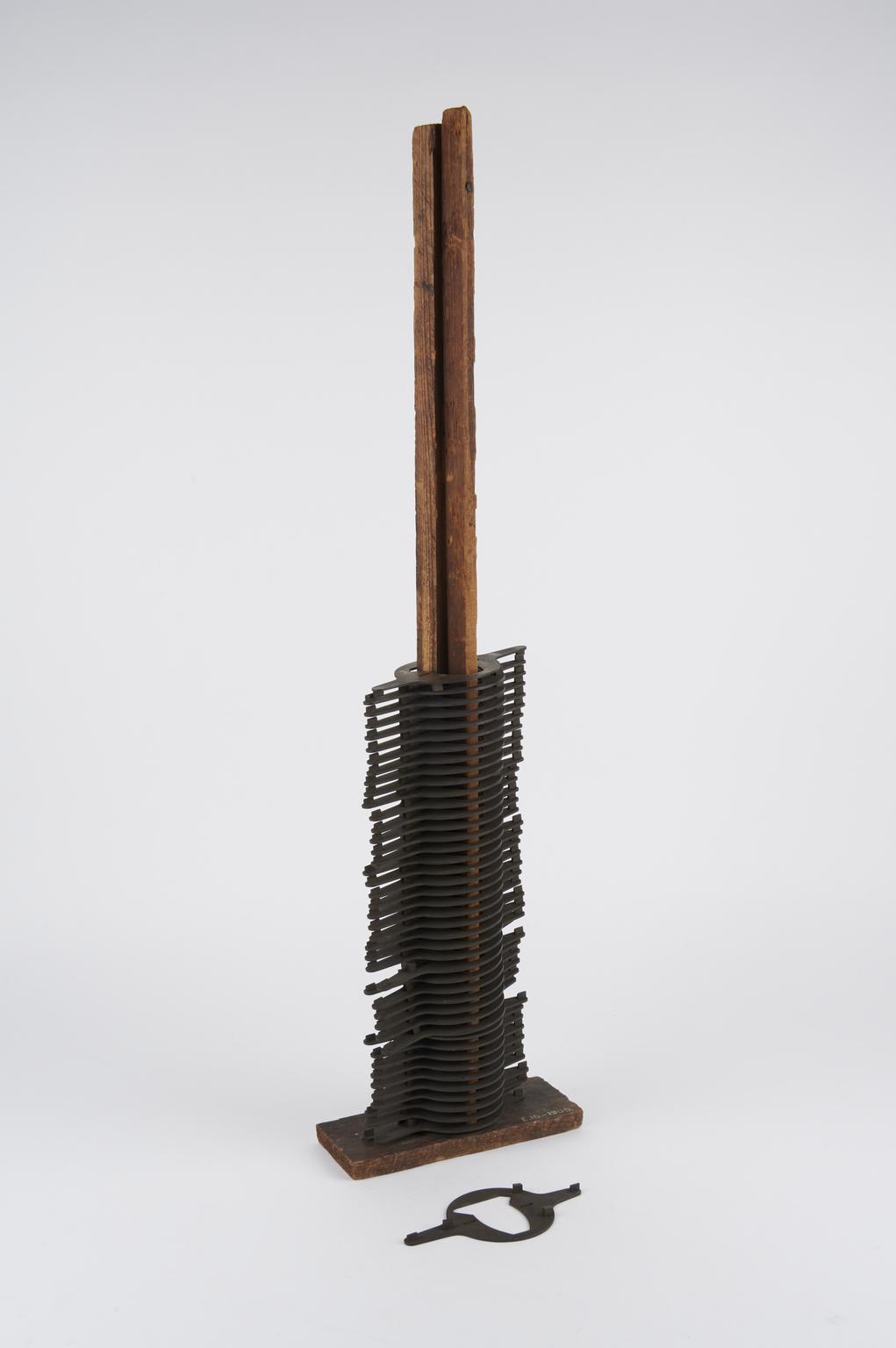
44 x Upper plates, carriage column, stored on a wooden shaft

35 x Trial piece for carriage column
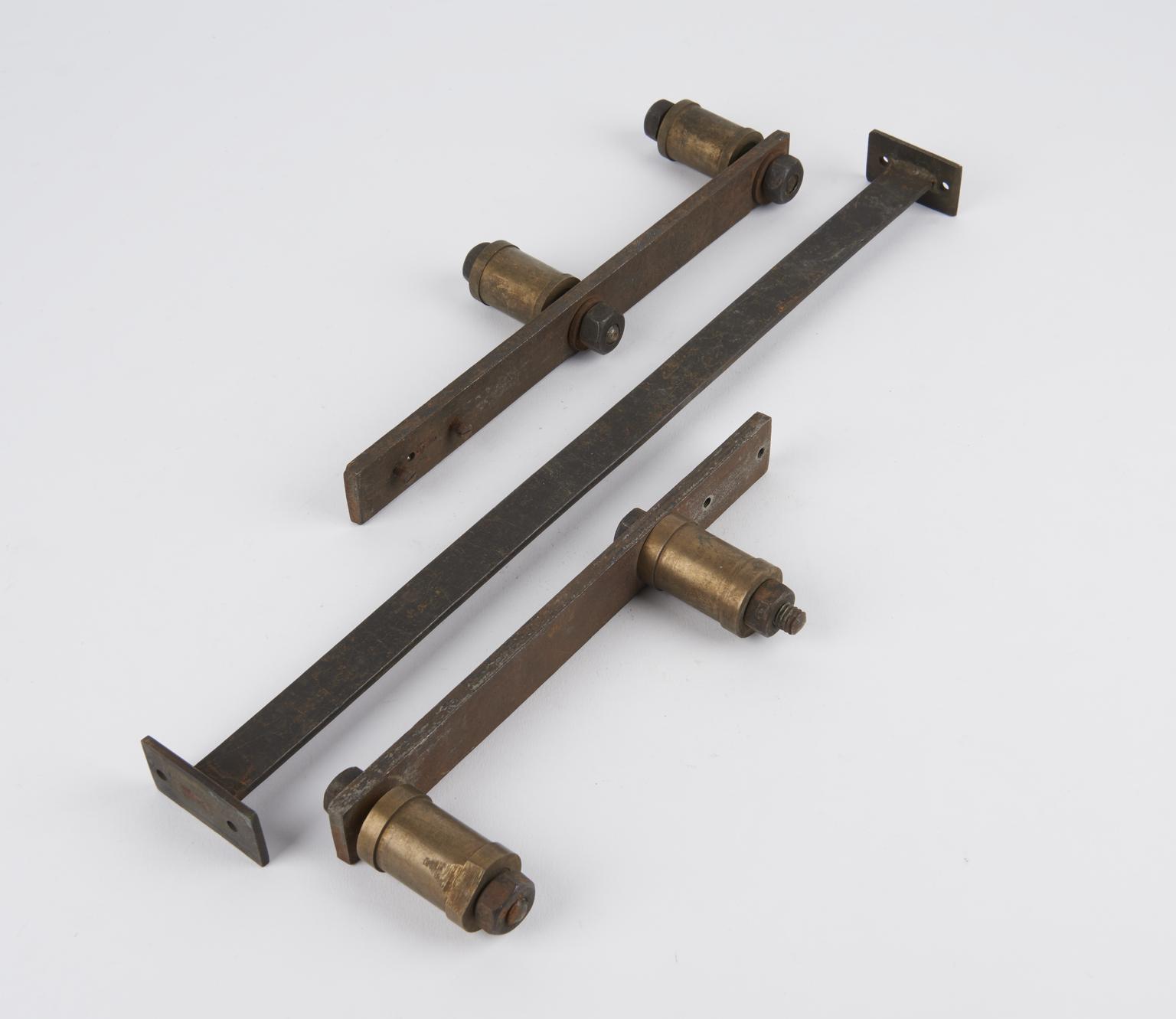
3 x Steelbars, two of which have brass collars fitted
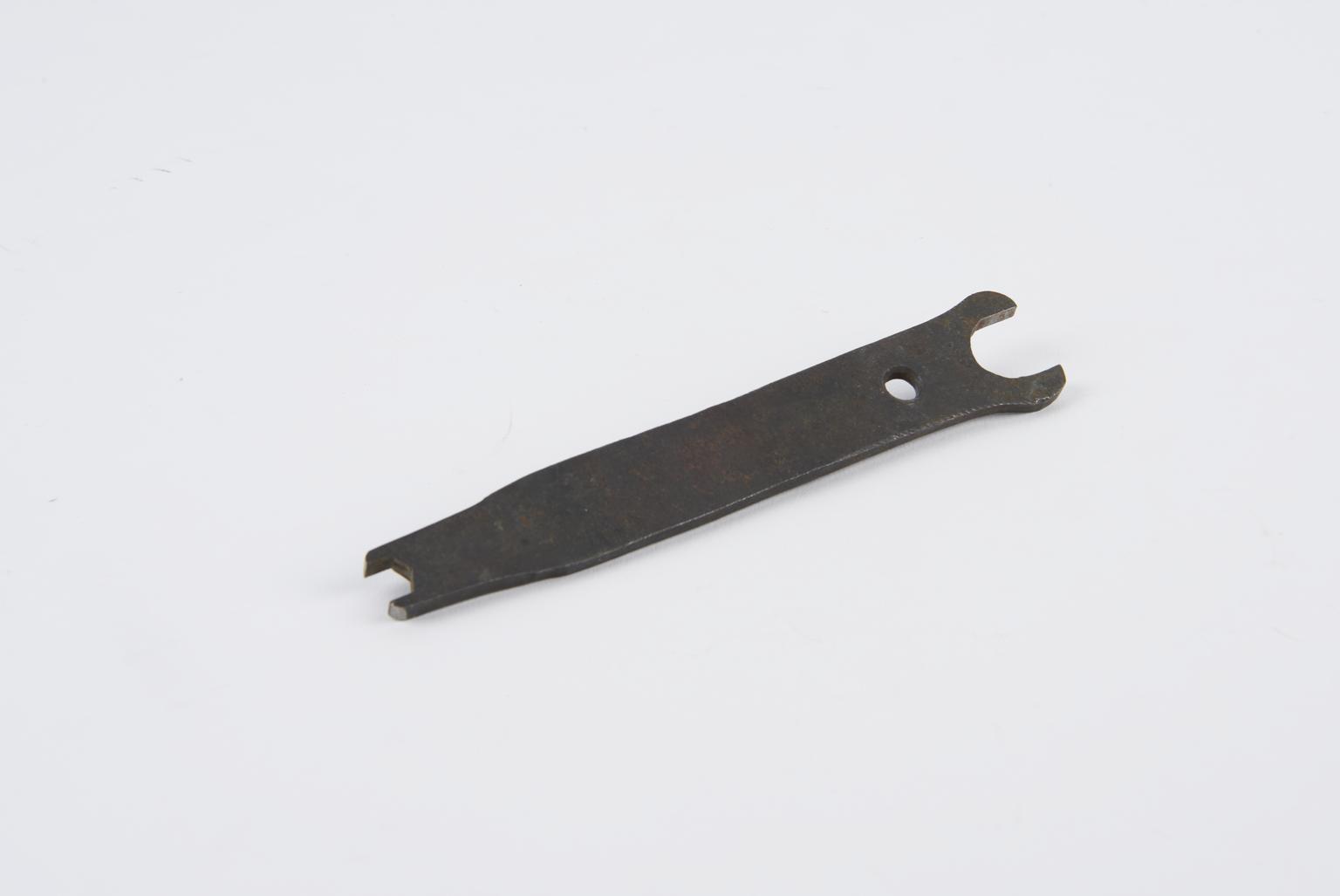
Double ended spanner
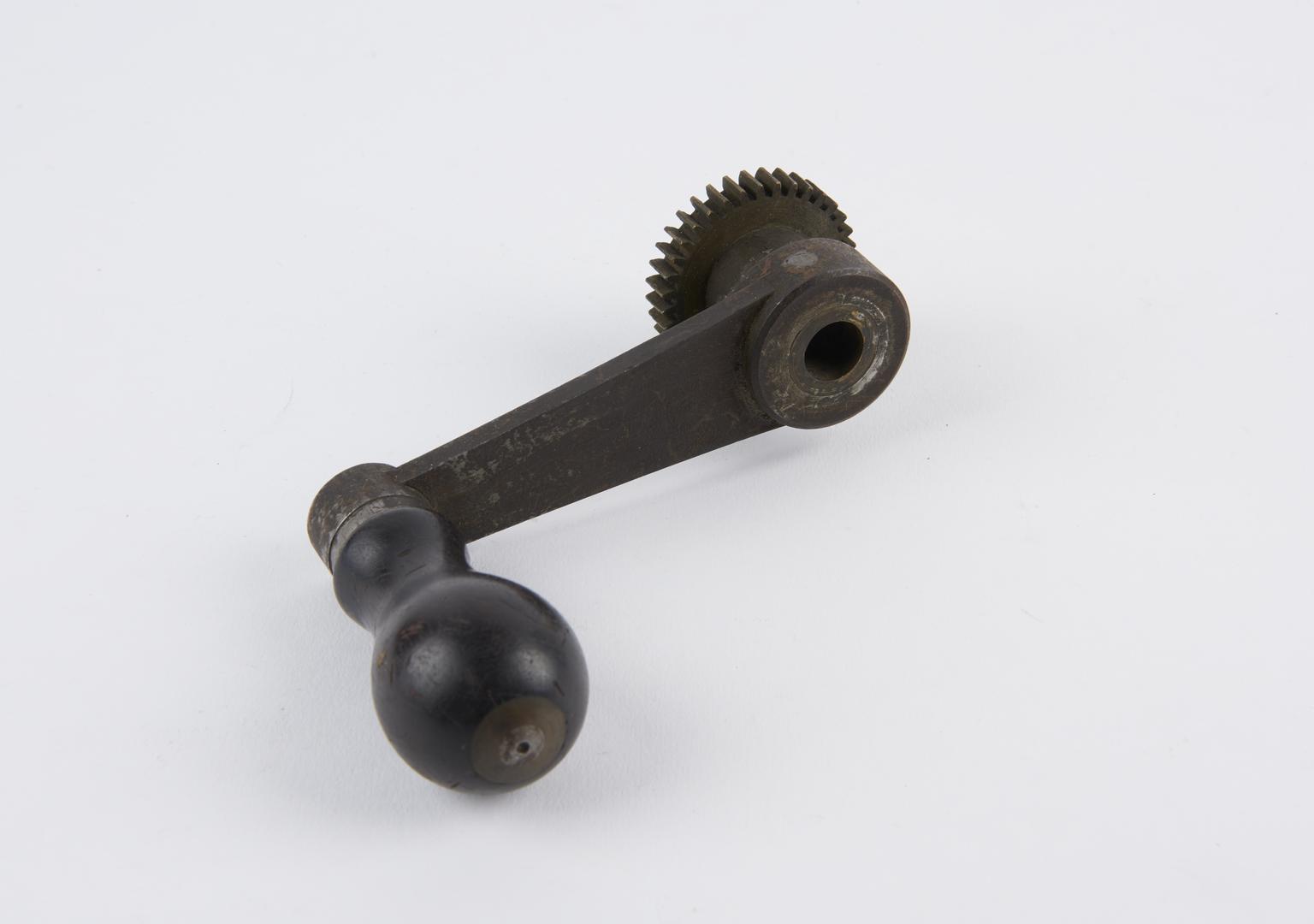
One of three operating handles

One of three operating handles
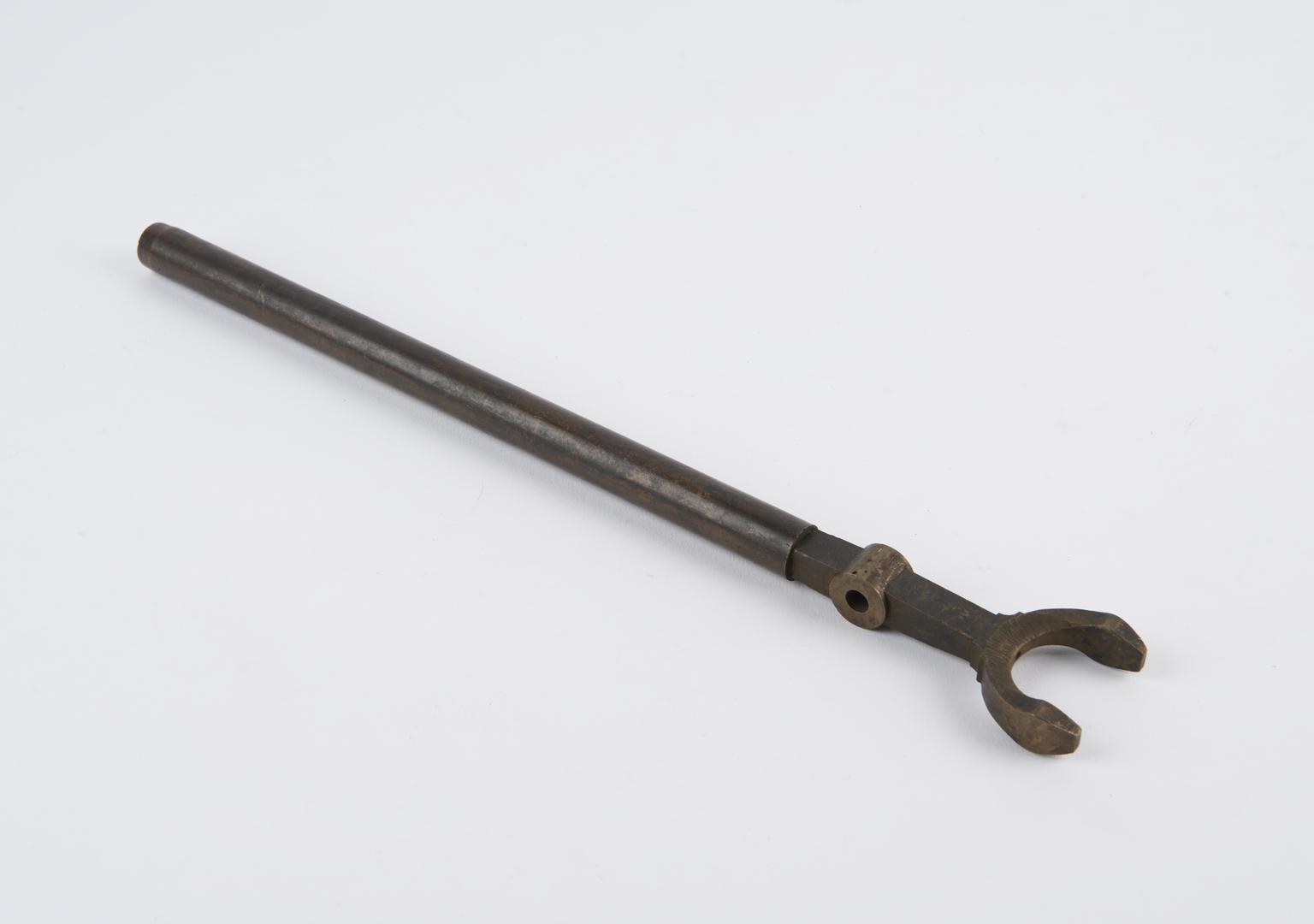
One of three operating handles

7 x pieces from moulds and punches (in cardboard box)

7 x Slide Assemblies
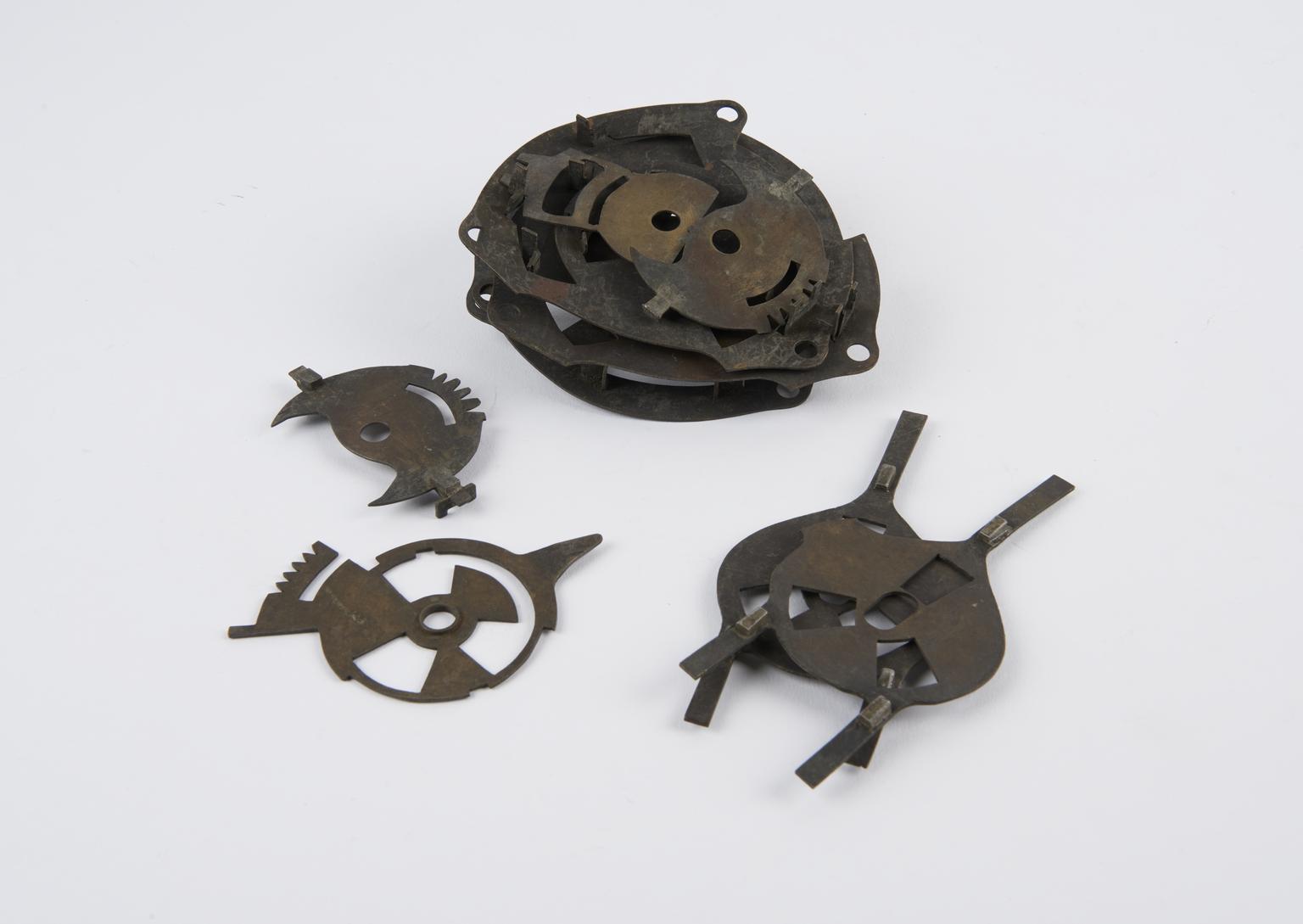
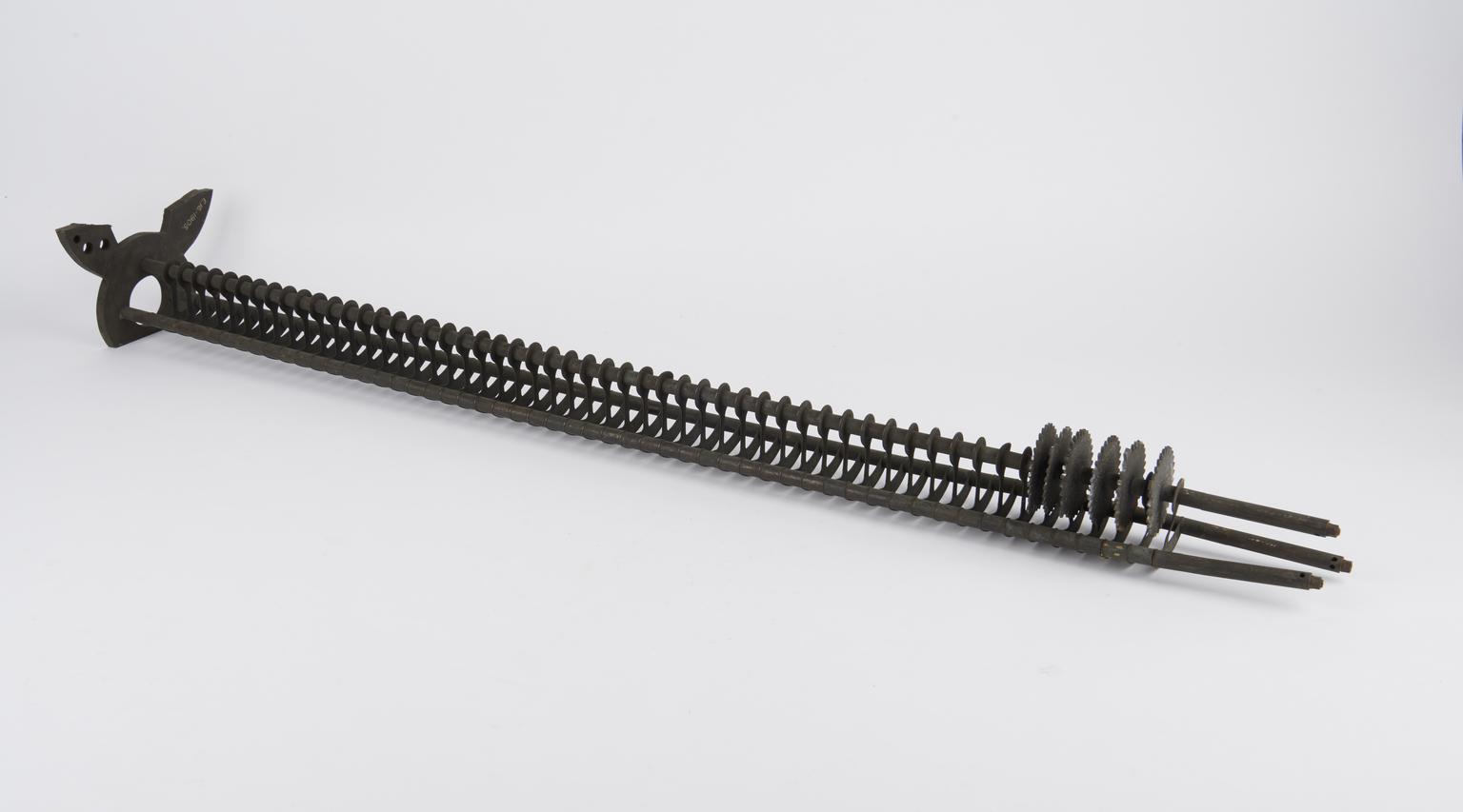
A column of punched plates, with six toothed wheels attached

Gear wheel/rack assembly, mounted on a wooden base
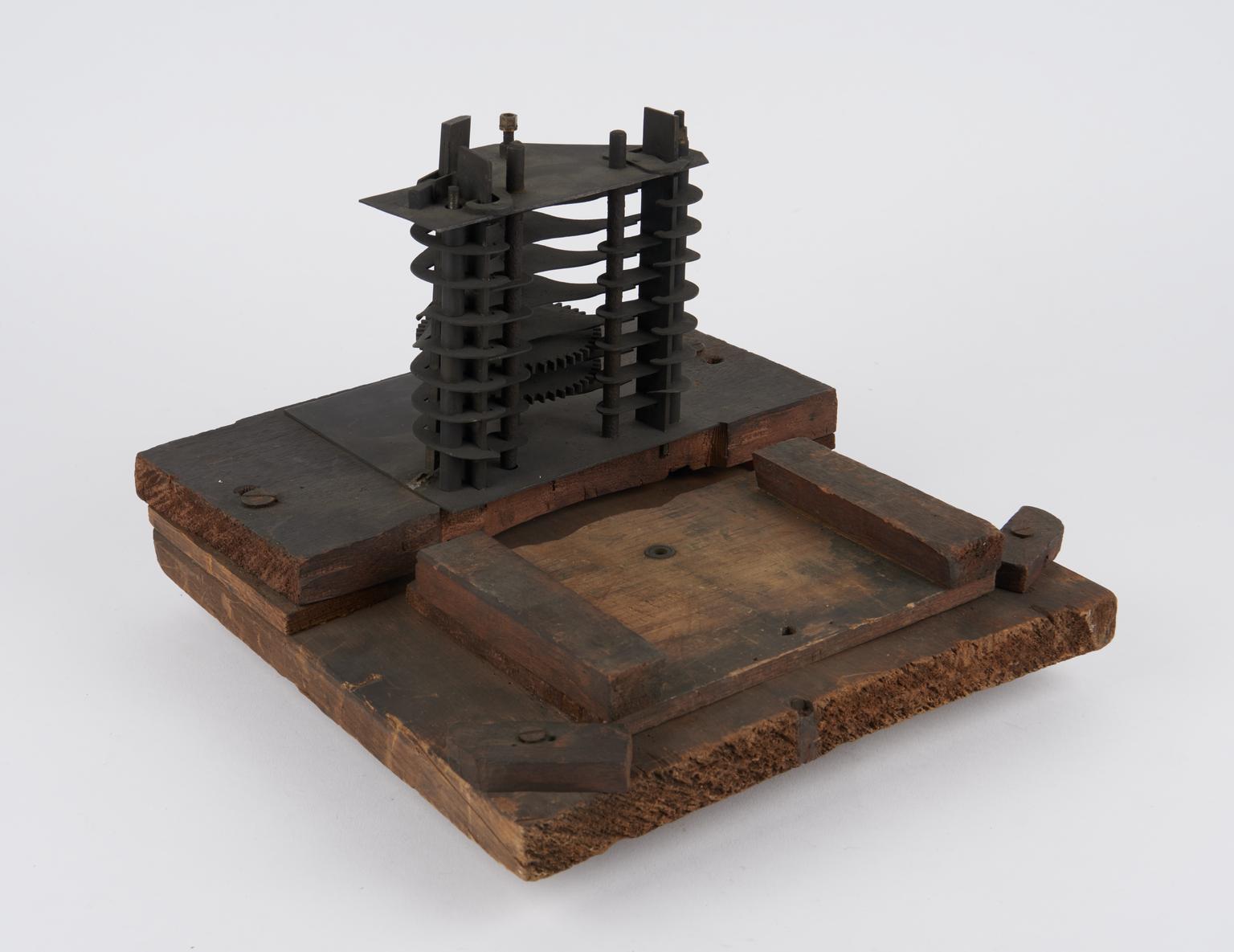
Trial piece - two gear wheels and frame, mounted on a wooden base
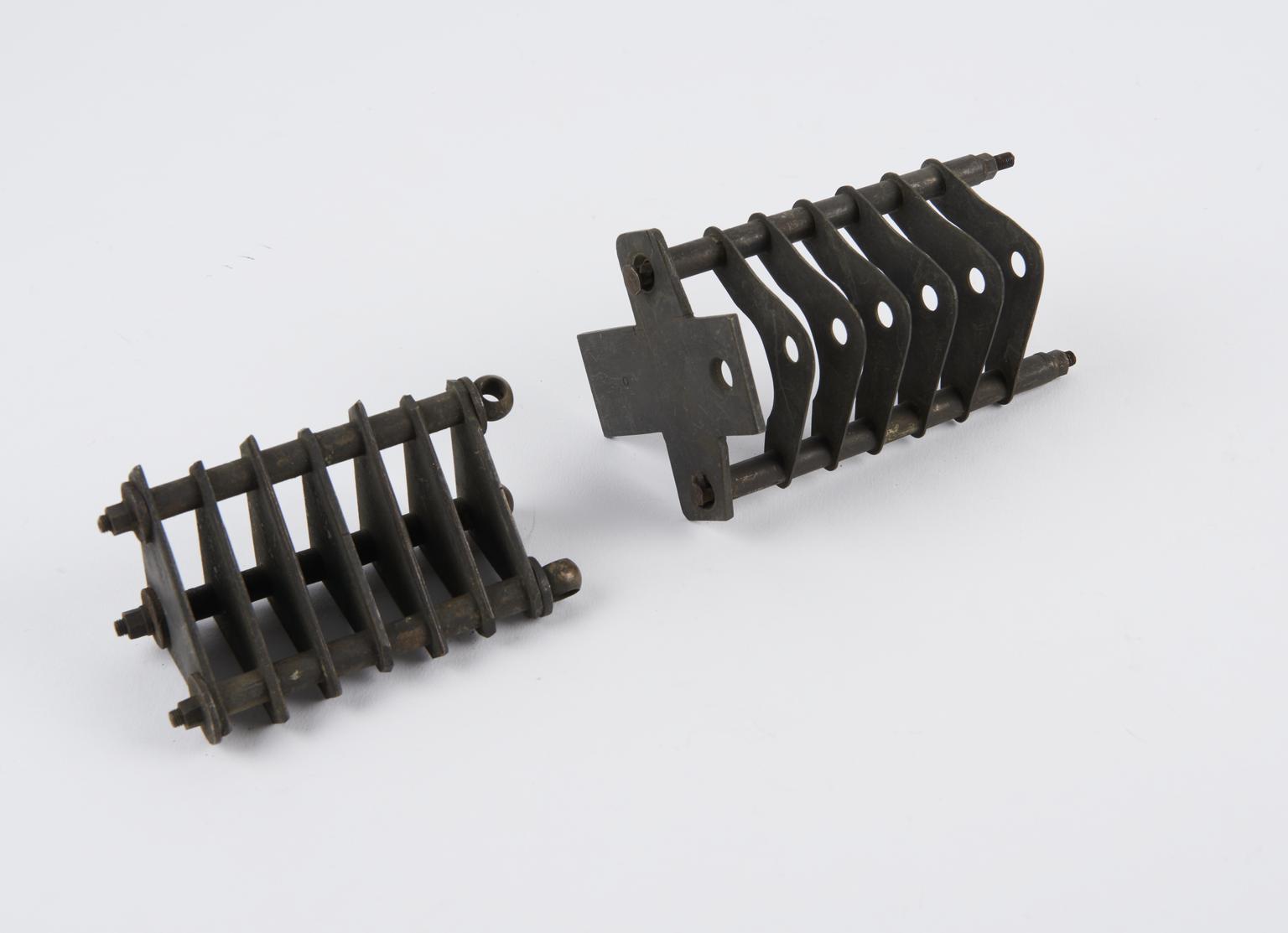
2 x Ribbed assemblies
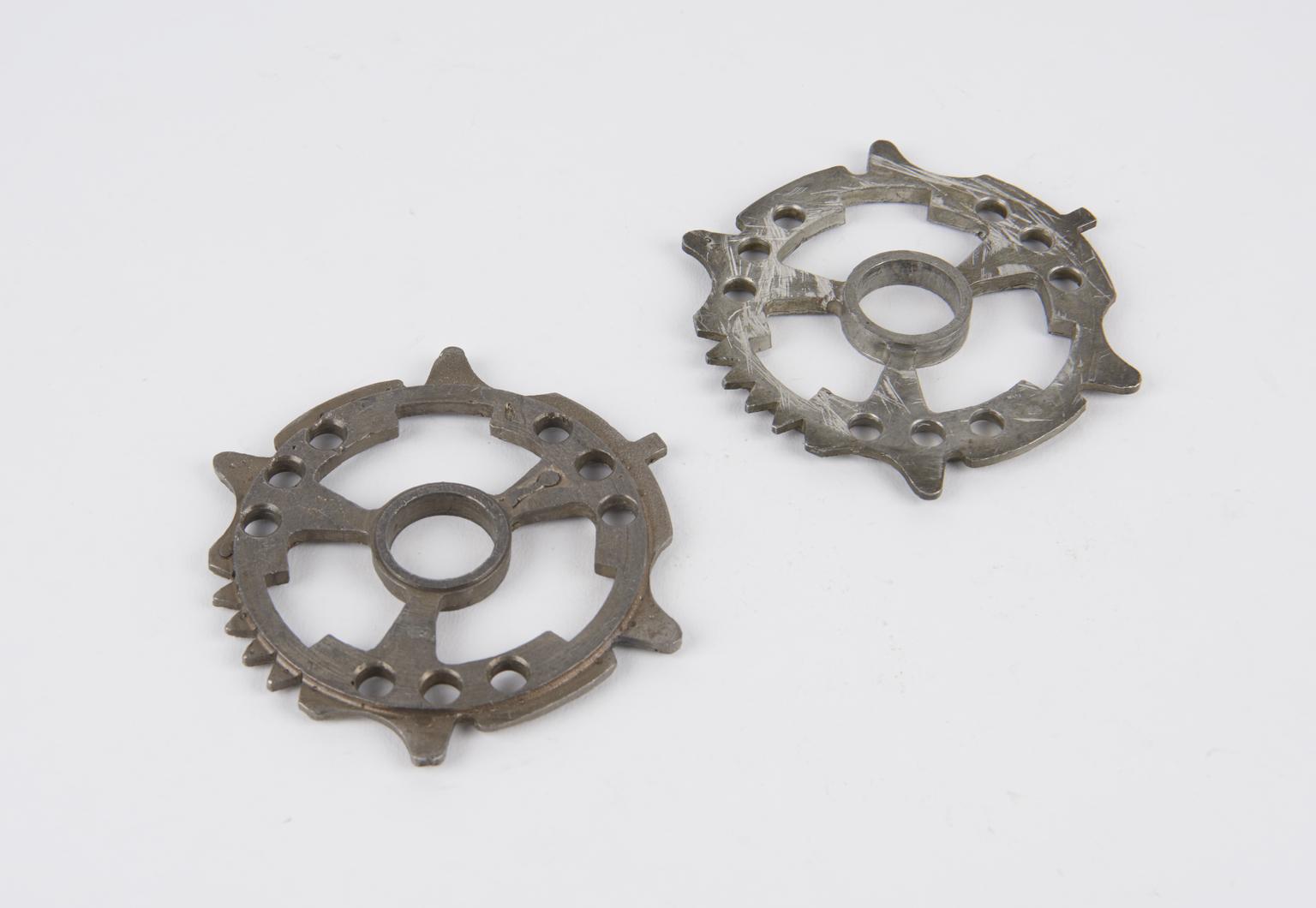
2 x Gear Wheels
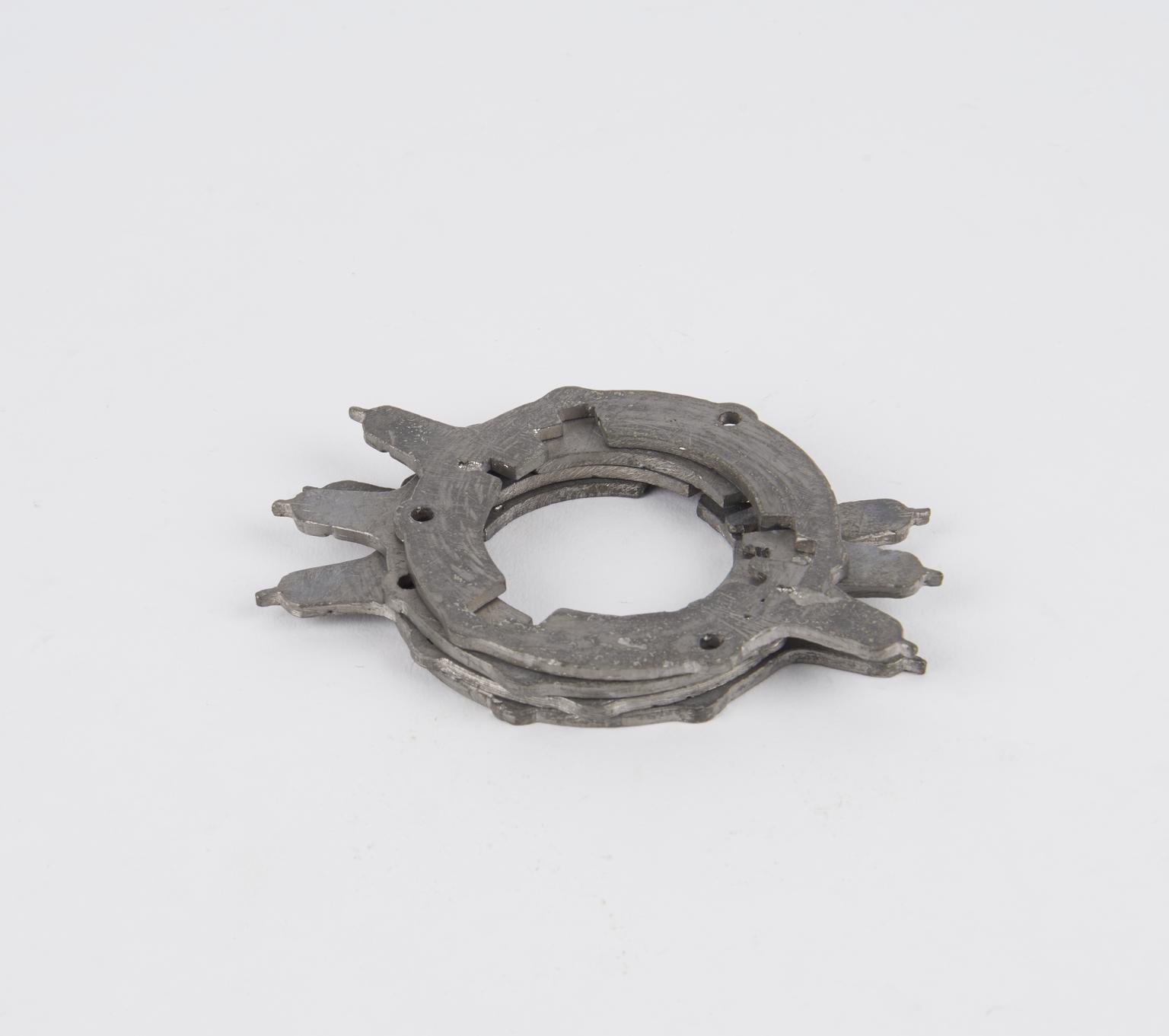
4 x Assemblies
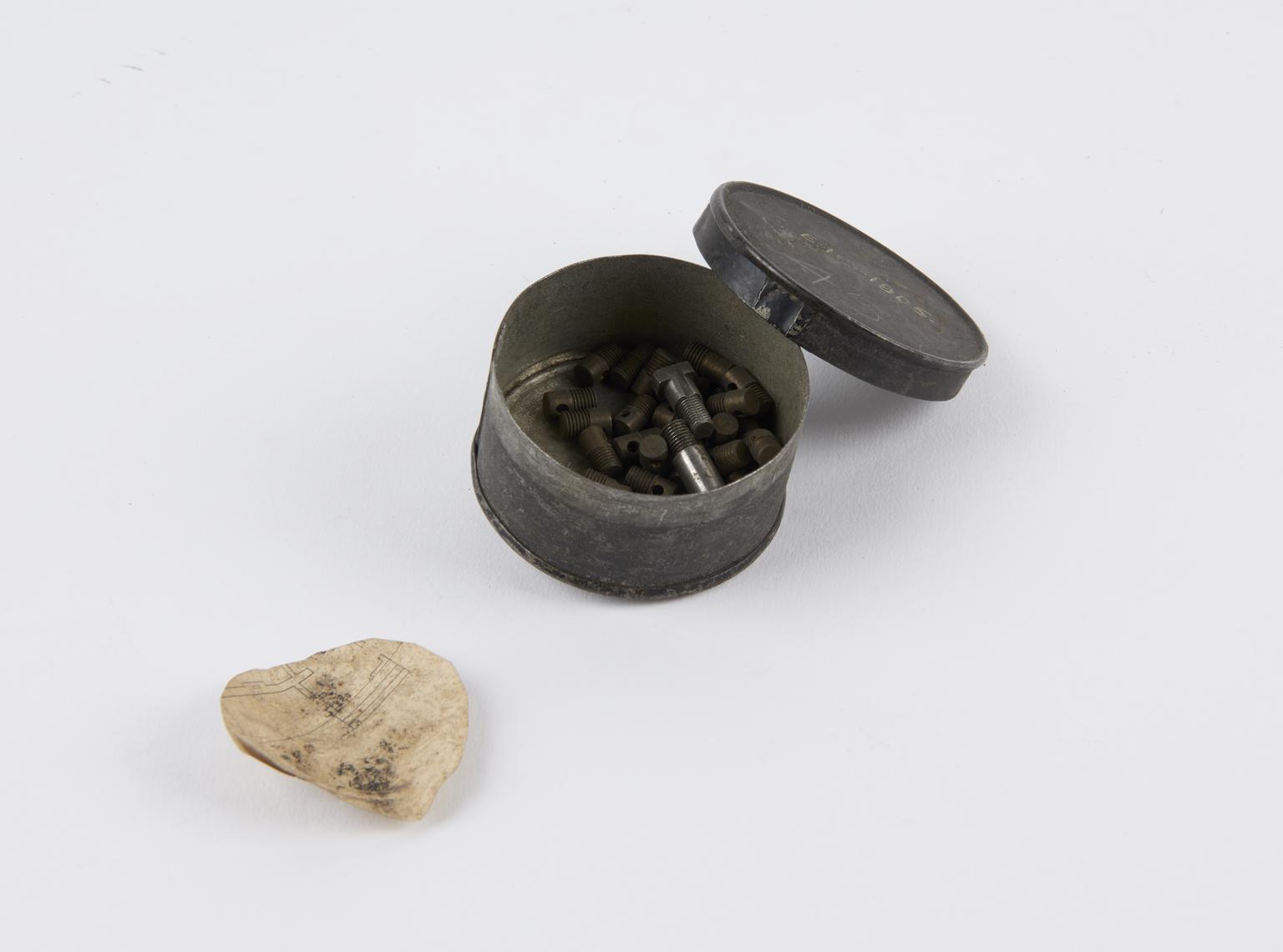
Small tin, containing: 4 x steel screwtops, 33 x capstan headed screws
5 x Trial pieces for carriage column (stamped out in brass)
Die, for pressure casting (E16-1905)
Die, for pressure casting (E10-1905)

Experimental Rack Assembly

Gear and lever assemblies, on heavy metal base
Sectored disk assembly, on metal base
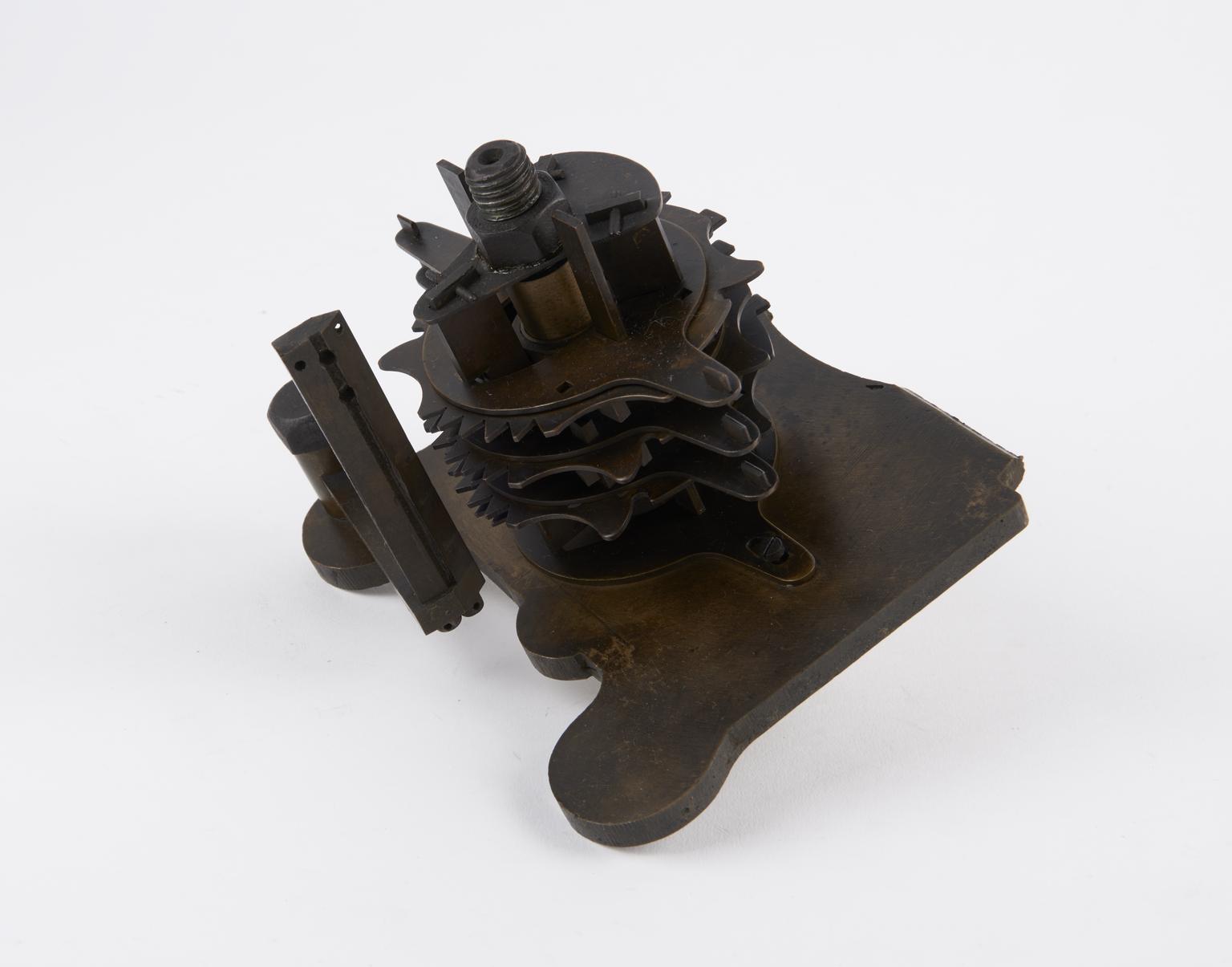
Sectored disk assembly, one of two, on metal base
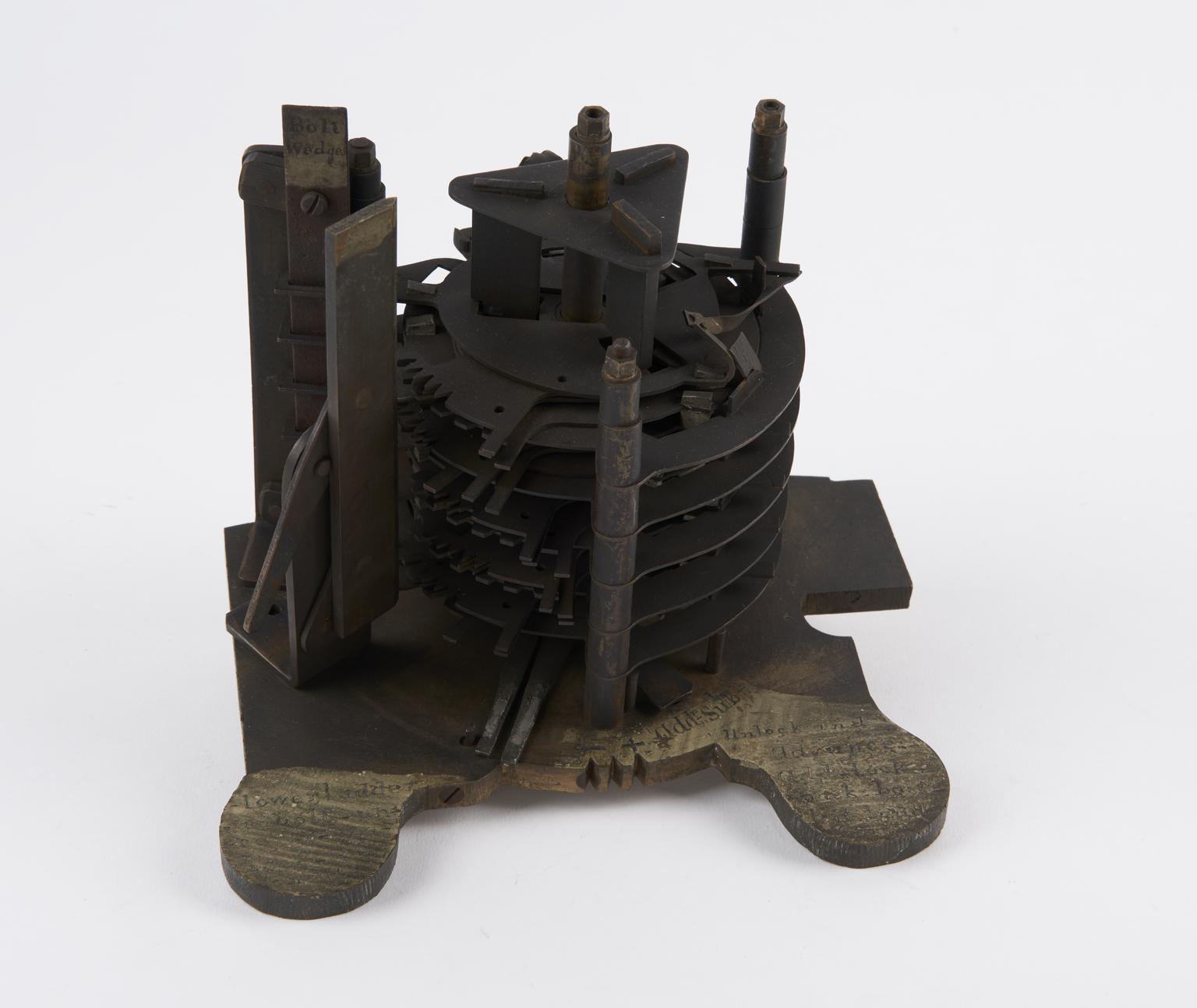
Sectored disk assembly, one of two, on metal base
Trial model and spare wheels for Analytical Engine, mounted on wooden base, by Charles Babbage, England, c. 1870
In 1843 celebrated polymath Charles Babbage began work on an ambitious new calculating machines called the Analytical Engine. Only trial pieces remain, but if completed it would likely have been the size of a large room, and would have used steam power to conduct its calculations by mvoing a complex set of cogs, leavers and punched cards. Babbage wanted it to be capable of addition, substraction, multiplication and division, its design containing much of the architecture that we would recognise in a modern-day computer.
3 x Brass gear wheels, 2 x colletts, 1 x shaped brass bar
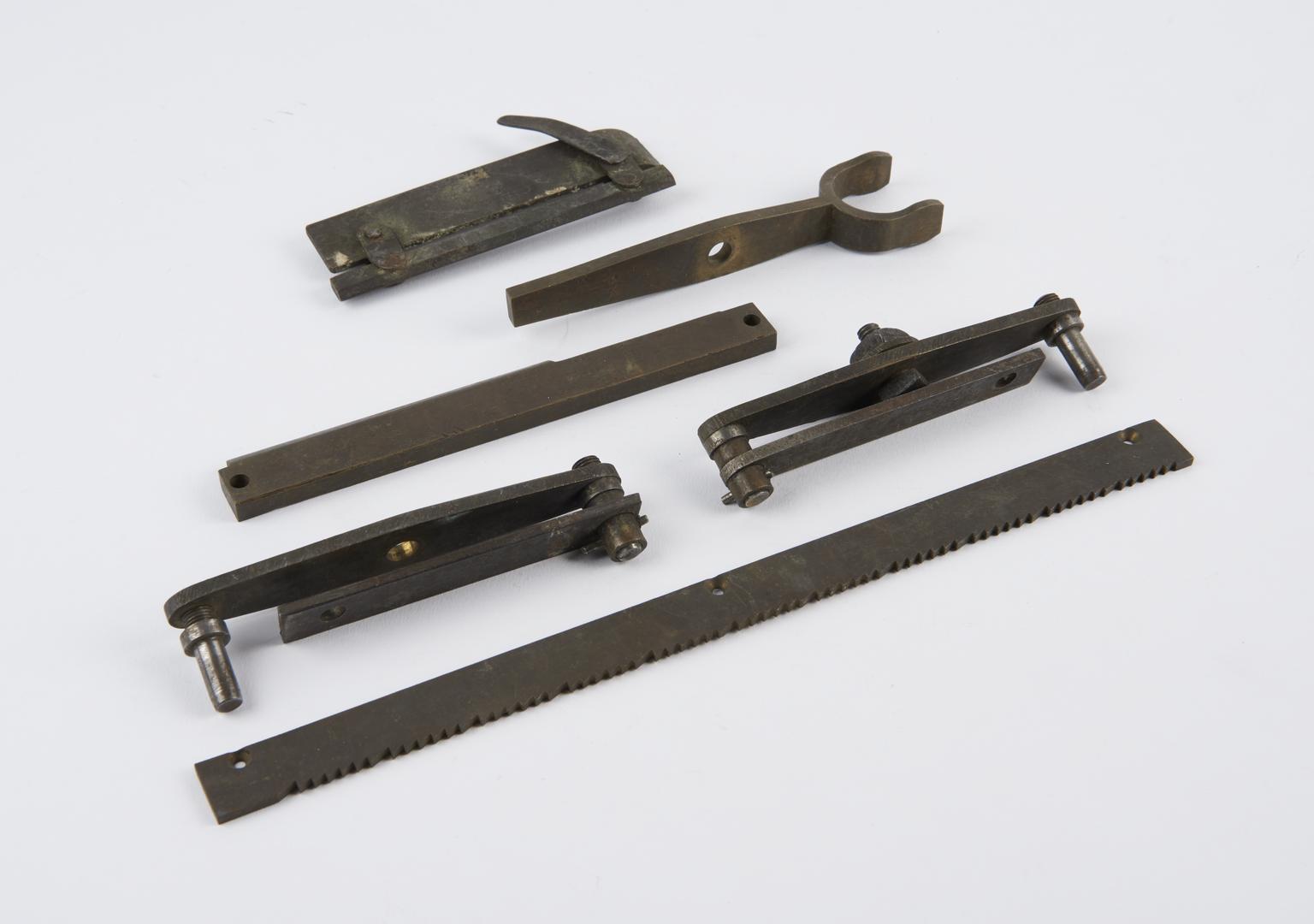
Punched cards for Analytical Engine (see stroke records)
Variable punch cards for Analytical Engine, nos. 1 - 118, about 1870
In 1843 celebrated polymath Charles Babbage began work on an ambitious new calculating machines called the Analytical Engine. If completed it would likely have been the size of a large room, and would have used steam power to conduct its calculations by moving a complex set of cogs, leavers and punched cards. Babbage wanted it to be capable of addition, subtraction, multiplication and division, its design containing much of the architecture that we would recognise in a modern-day computer. Instructions and data were entered into the engine using punched cards, with small 'operation cards' specifying the operations to be performed, and larger 'variable cards' defining where the value should be stored.
Operation punch cards for Analytical Engine, nos. 1 - 22
In 1843 celebrated polymath Charles Babbage began work on an ambitious new calculating machines called the Analytical Engine. If completed it would likely have been the size of a large room, and would have used steam power to conduct its calculations by moving a complex set of cogs, leavers and punched cards. Babbage wanted it to be capable of addition, subtraction, multiplication and division, its design containing much of the architecture that we would recognise in a modern-day computer. Instructions and data were entered into the engine using punched cards, with small 'operation cards' specifying the operations to be performed, and larger 'variable cards' defining where the value should be stored.
Operation punch cards for Analytical Engine, nos. 22 - 29
In 1843 celebrated polymath Charles Babbage began work on an ambitious new calculating machines called the Analytical Engine. If completed it would likely have been the size of a large room, and would have used steam power to conduct its calculations by moving a complex set of cogs, leavers and punched cards. Babbage wanted it to be capable of addition, subtraction, multiplication and division, its design containing much of the architecture that we would recognise in a modern-day computer. Instructions and data were entered into the engine using punched cards, with small 'operation cards' specifying the operations to be performed, and larger 'variable cards' defining where the value should be stored.
Experimental column for Analytical Engine, by Charles Babbage, England, 1870-1871
Lower plates from Analytical Engine, qty ?
Envelope of original labels from from Charles Babbage's work on calculating machines


